Shrubs with showy flowers can bring color to your garden throughout the year. There are shrubs that flower every season. Considering their permanent character and importance to the structure of a garden, why not choose flowering shrubs to add color and interest to your garden.
Shrubs can be used for carpeting the ground to clothing a high wall. They can be used to screen out unsightly objects or to tie the foundation walls of a building to the ground. Shrubs can be sited to display individual charm and beauty as a specimen; they can be grouped together for mass effect or squeezed together in a hedge.
Here are shrub favorites that can cheer the garden with flowers before the official arrival of spring, flowers for color during the time of the year you are most in the garden, and shrubs to prolong garden interest well into autumn. Click on the red botanical name to learn more about each.
Late winter- and early spring-blooming shrubs
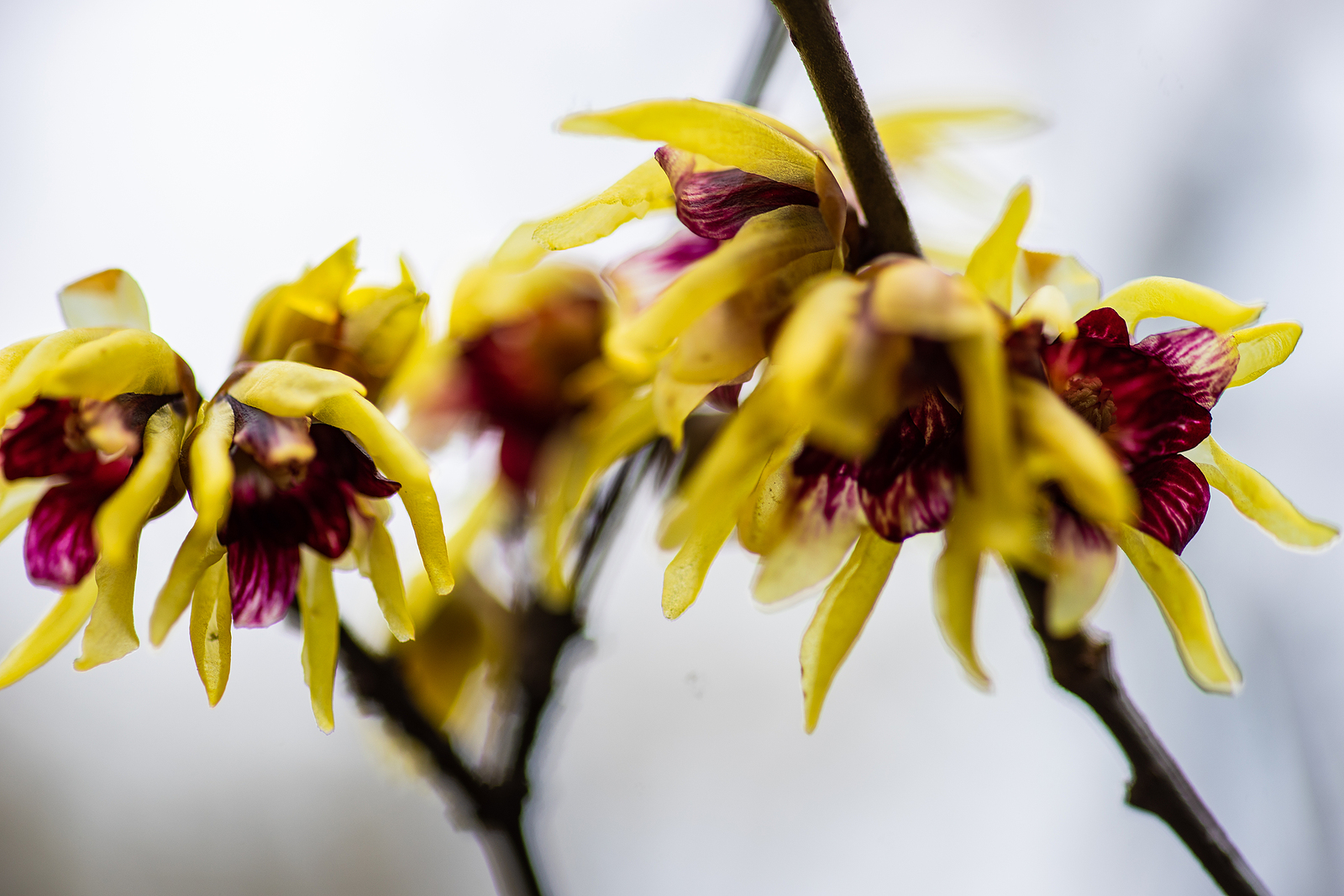 Chimonanthus praecox (wintersweet). Honey scented bowl-shaped blooms in early spring, before shiny leaves. Spreading deciduous shrub or small tree grows to 9 feet tall and wide. Glossy bright green leaves. Plant in full sun. Zones 5-9.
Chimonanthus praecox (wintersweet). Honey scented bowl-shaped blooms in early spring, before shiny leaves. Spreading deciduous shrub or small tree grows to 9 feet tall and wide. Glossy bright green leaves. Plant in full sun. Zones 5-9.
 Corylopsis spp. (winter hazel). Yellow flowers open early in spring and can be damaged by late frosts. Attractive in a woodland setting or with an evergreen background. Plant in sandy soil with generous amounts of peat moss. Grows to 9 feet tall and wide. Provide protection from cold winds. Full sun, partial shade. Zones 6 – 8.
Corylopsis spp. (winter hazel). Yellow flowers open early in spring and can be damaged by late frosts. Attractive in a woodland setting or with an evergreen background. Plant in sandy soil with generous amounts of peat moss. Grows to 9 feet tall and wide. Provide protection from cold winds. Full sun, partial shade. Zones 6 – 8.
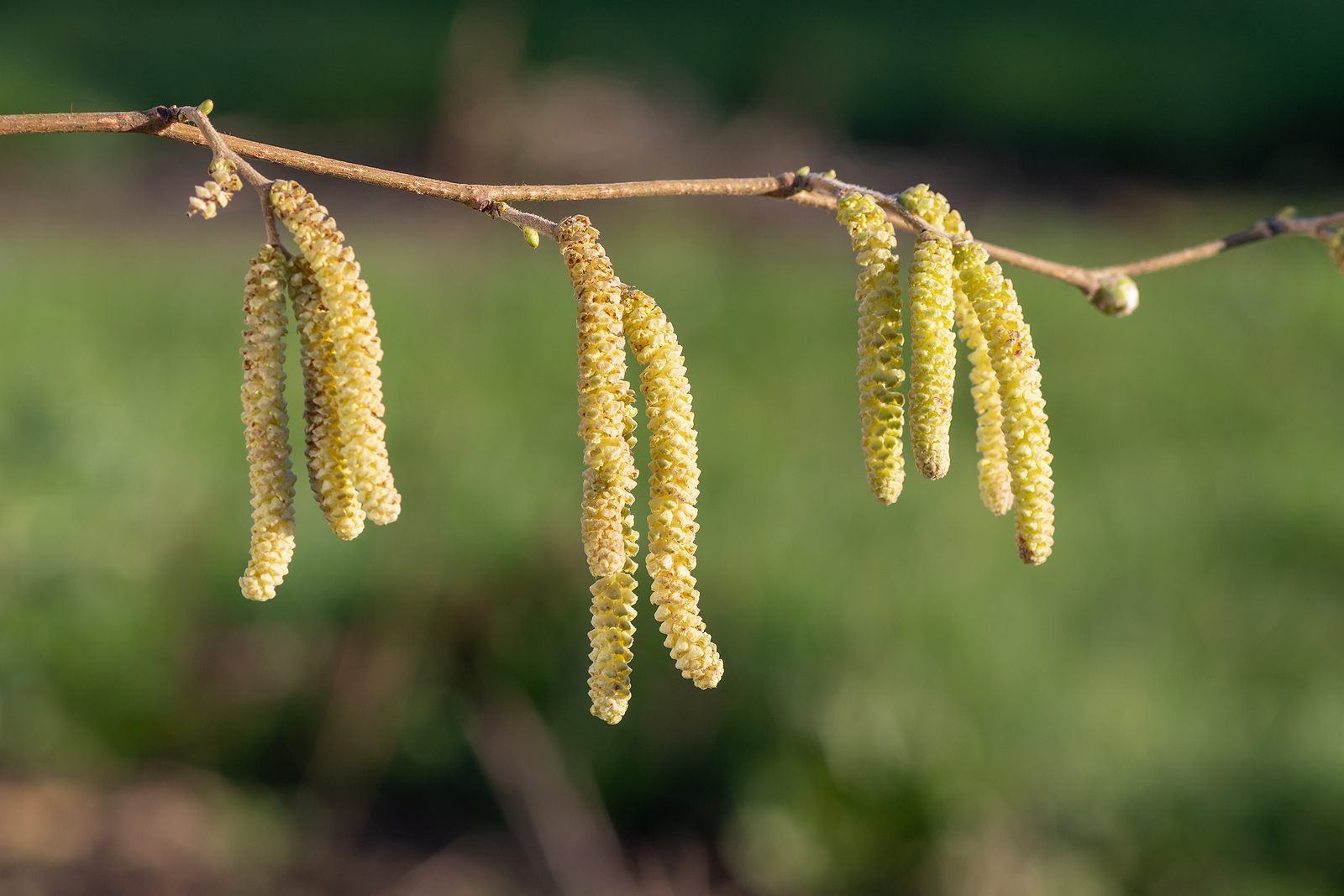 Corylus avellana ‘Contorta’ (Harry Lauder’s walking stick). Pendent yellow catkins are borne in late winter and early spring. Upright or tree-like shrubs with broadly heart-shaped mid-green leaves. Has strongly twisted shoots. Grows to 15 feet tall and wide. Zones 3-9.
Corylus avellana ‘Contorta’ (Harry Lauder’s walking stick). Pendent yellow catkins are borne in late winter and early spring. Upright or tree-like shrubs with broadly heart-shaped mid-green leaves. Has strongly twisted shoots. Grows to 15 feet tall and wide. Zones 3-9.
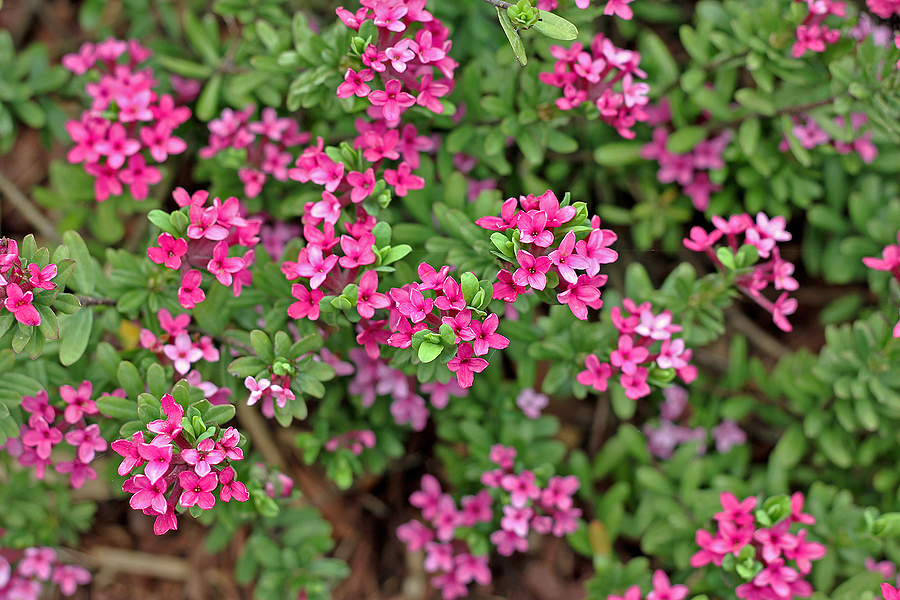 Daphne spp. (daphne). Clusters of tiny flowers are handsome, and those of some kinds are fragrant. Although they resemble lilac blooms, they are not as large. Select a position that is well protected from the wind. Does best in light, easily worked soil with considerable humus. Grow 3 to 5 feet tall and about as wide. Zones 4-8.
Daphne spp. (daphne). Clusters of tiny flowers are handsome, and those of some kinds are fragrant. Although they resemble lilac blooms, they are not as large. Select a position that is well protected from the wind. Does best in light, easily worked soil with considerable humus. Grow 3 to 5 feet tall and about as wide. Zones 4-8.
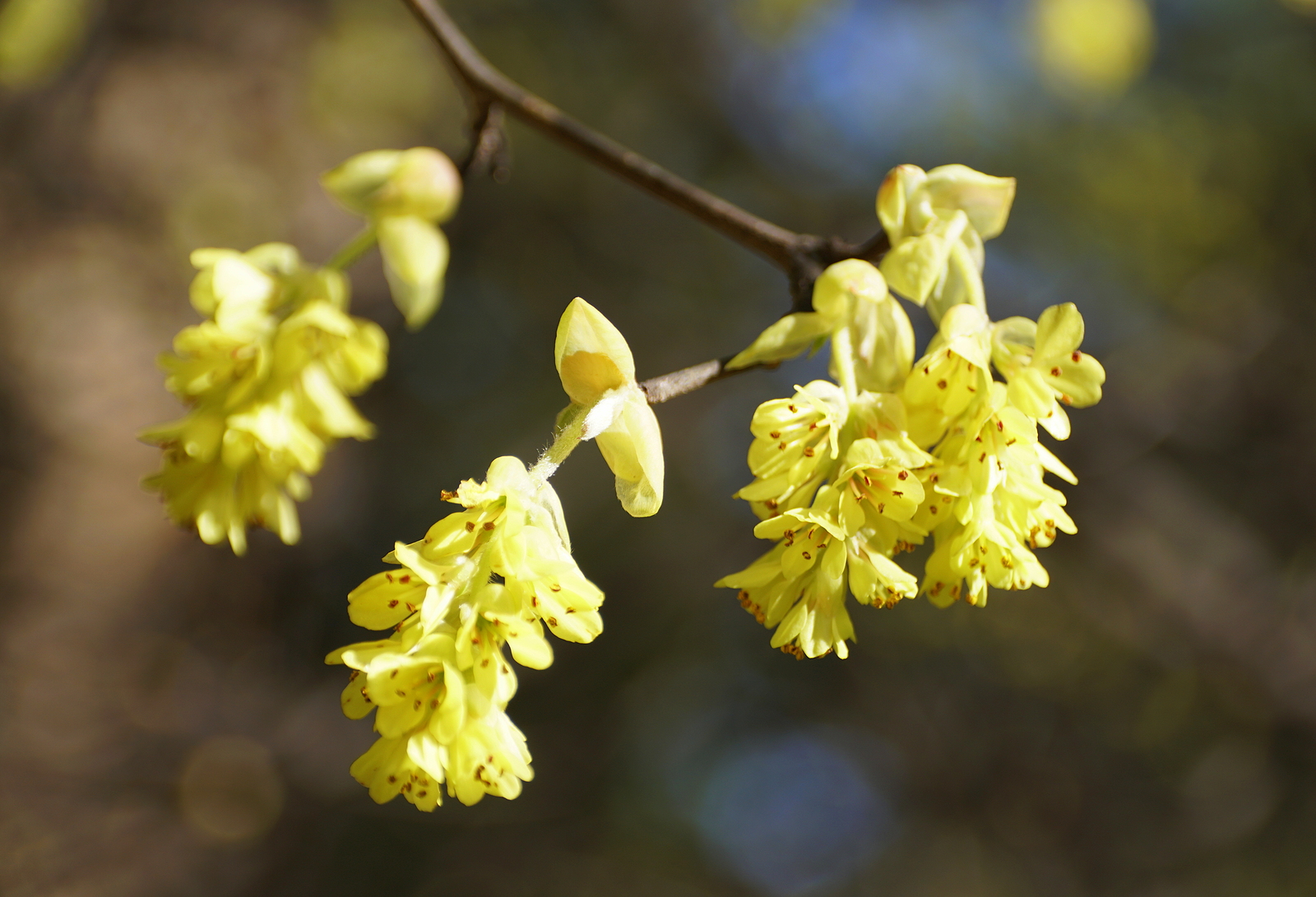 Hamamelis spp. (witch hazel). Spidery-looking flowers are produced in shades or yellow or copper-red, or sometimes yellow with reddish centers. Most kinds bloom from late winter to early spring. Full sun, partial shade. Grows to 15 feet tall and wide. Zones 5 – 9.
Hamamelis spp. (witch hazel). Spidery-looking flowers are produced in shades or yellow or copper-red, or sometimes yellow with reddish centers. Most kinds bloom from late winter to early spring. Full sun, partial shade. Grows to 15 feet tall and wide. Zones 5 – 9.
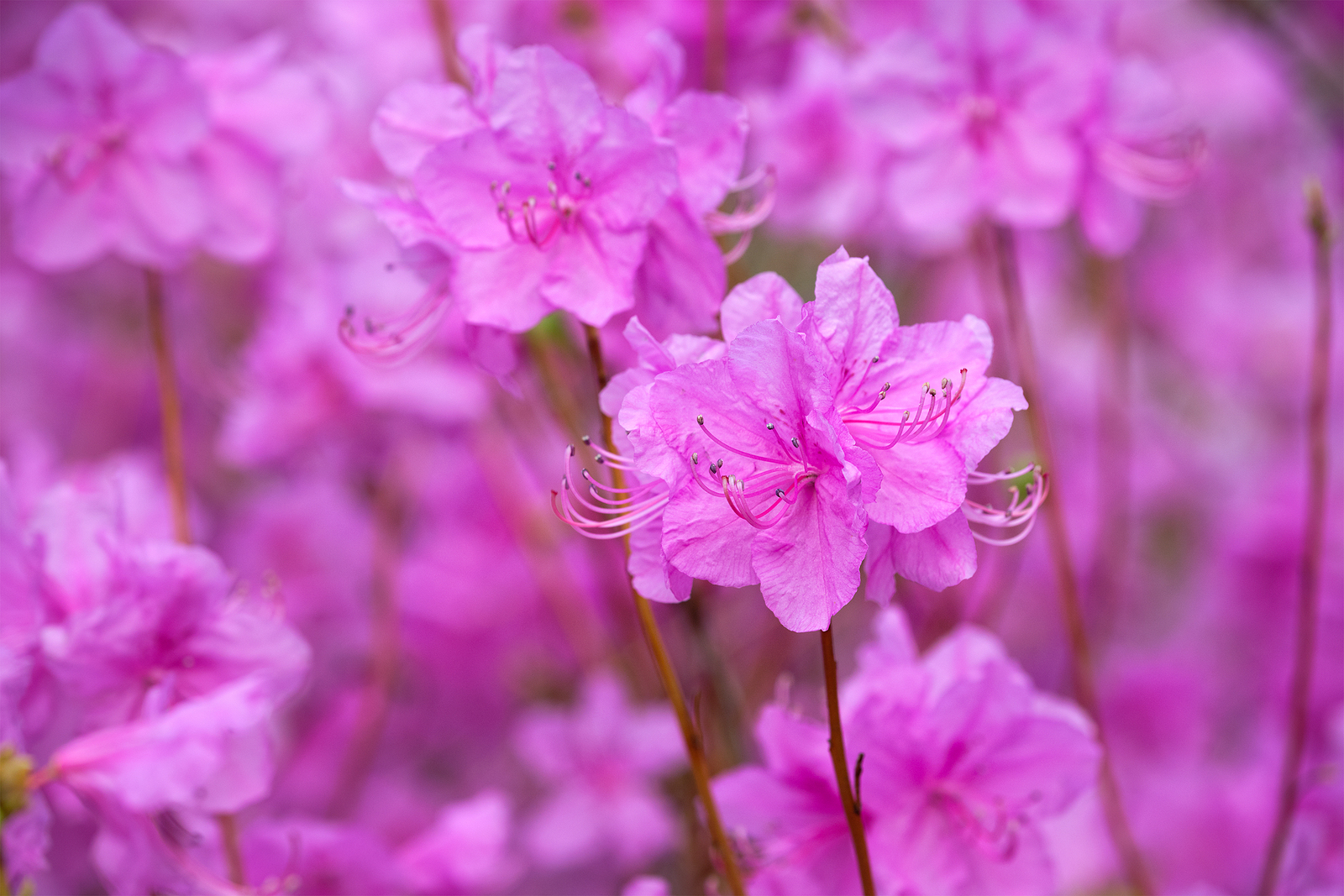 Rhododendron mucronulatum (Korean rhododendron). Dwarf to medium-sized, deciduous azalea with erect form. Funnel-shaped, pinkish-purple, or occasionally white flowers. Grow in full sun. Grows to 1 to 8 feet tall and 3 feet wide. Zones 5-8.
Rhododendron mucronulatum (Korean rhododendron). Dwarf to medium-sized, deciduous azalea with erect form. Funnel-shaped, pinkish-purple, or occasionally white flowers. Grow in full sun. Grows to 1 to 8 feet tall and 3 feet wide. Zones 5-8.
Spring-blooming shrubs
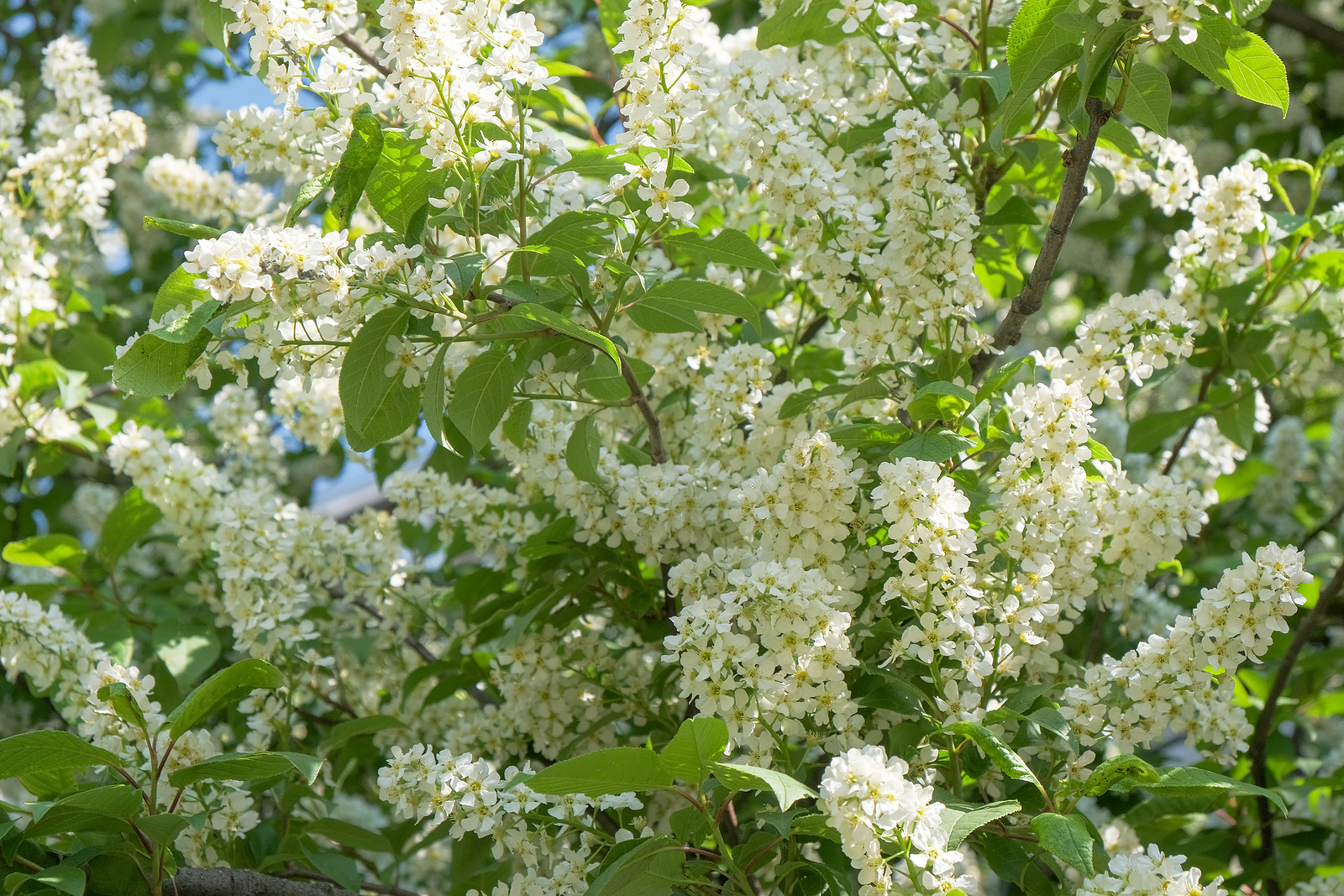 Aronia spp. (chokeberry). Upright shrubs with fragrant frothy white flowers in spring, good fall color, and fruits that attract birds. Mass plantings are very showy in spring, fall, and early winter. Plant in full sun. Grows 6 to 8 feet tall and 5 feet wide. Zones 4-9.
Aronia spp. (chokeberry). Upright shrubs with fragrant frothy white flowers in spring, good fall color, and fruits that attract birds. Mass plantings are very showy in spring, fall, and early winter. Plant in full sun. Grows 6 to 8 feet tall and 5 feet wide. Zones 4-9.
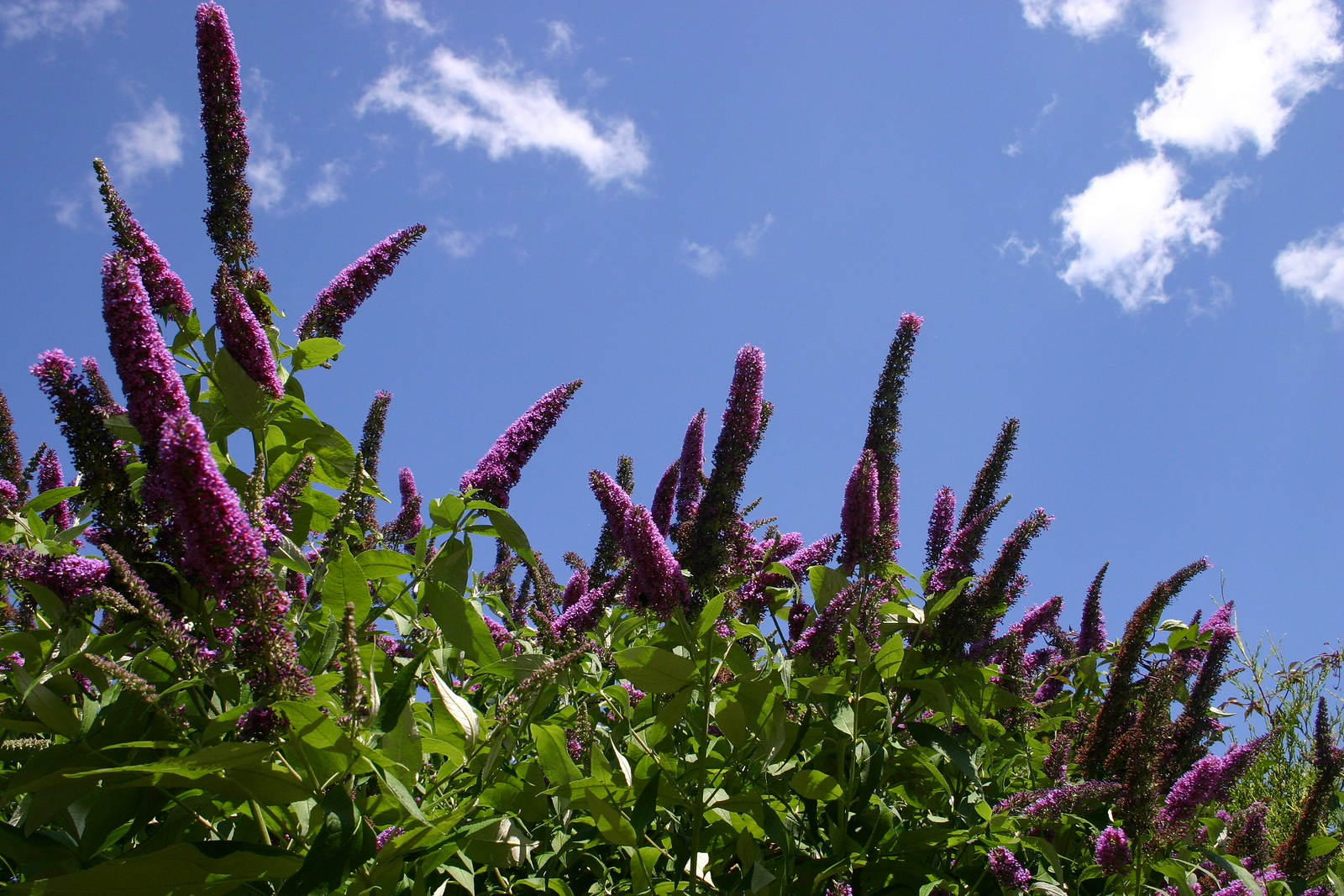 Buddleia alternifolia ‘Argentea’ (silver fountain buddleia). The earliest buddleia to flower; its long garlands of fragrant tiny lavender-blue blossoms open in early summer on last year’s wood. Branches are pendulous. A particularly hardy species. Grows to 12 feet tall and wide. Zones 6-9.
Buddleia alternifolia ‘Argentea’ (silver fountain buddleia). The earliest buddleia to flower; its long garlands of fragrant tiny lavender-blue blossoms open in early summer on last year’s wood. Branches are pendulous. A particularly hardy species. Grows to 12 feet tall and wide. Zones 6-9.
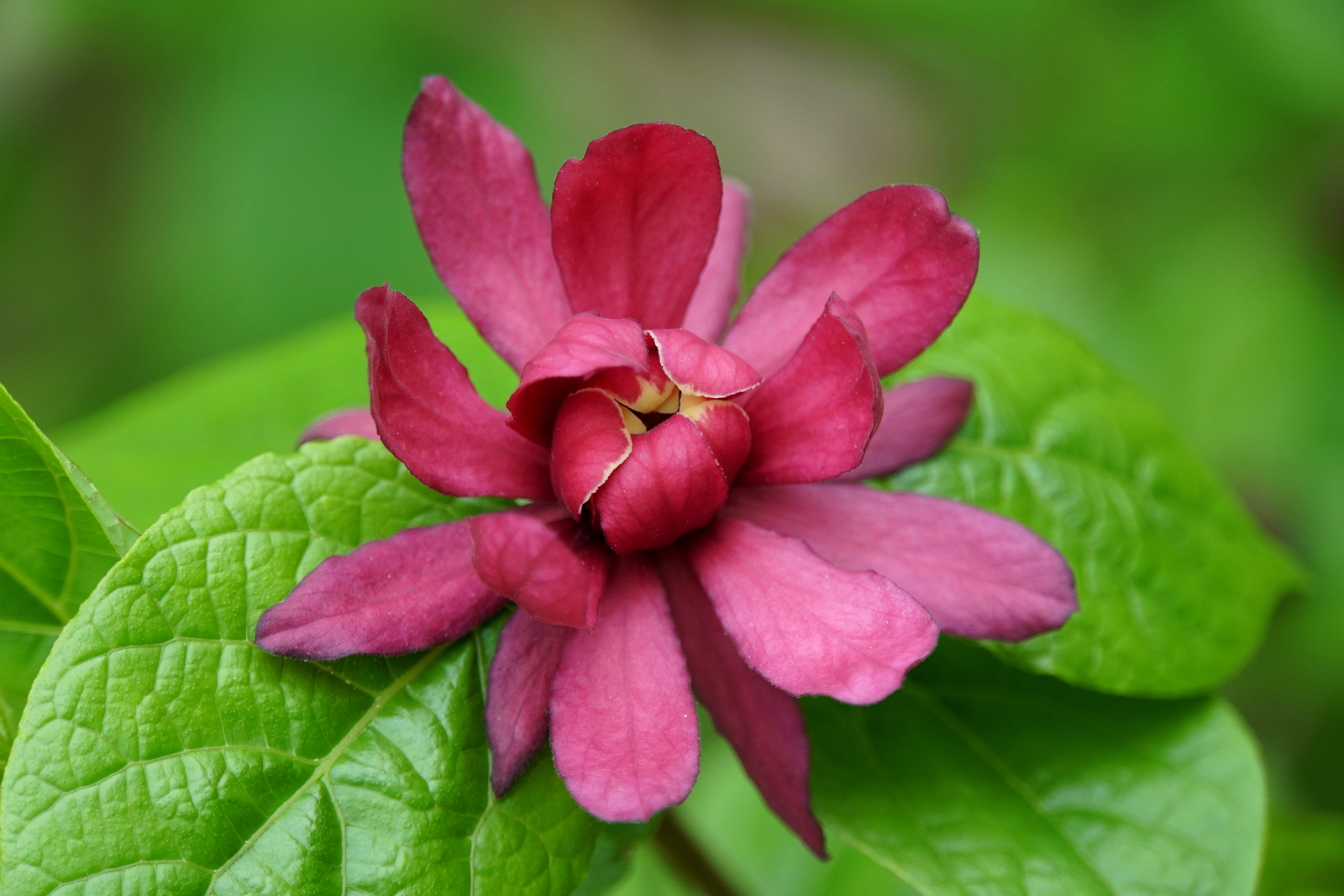 Calycanthus floridus (Carolina allspice). Strap-shaped dark red petals fade to brown at the tips. Bushy, spreading shrub with oblong bright green leaves turning yellow in autumn. Grows to 8 feet tall and 10 feet wide. Zones 5-9.
Calycanthus floridus (Carolina allspice). Strap-shaped dark red petals fade to brown at the tips. Bushy, spreading shrub with oblong bright green leaves turning yellow in autumn. Grows to 8 feet tall and 10 feet wide. Zones 5-9.
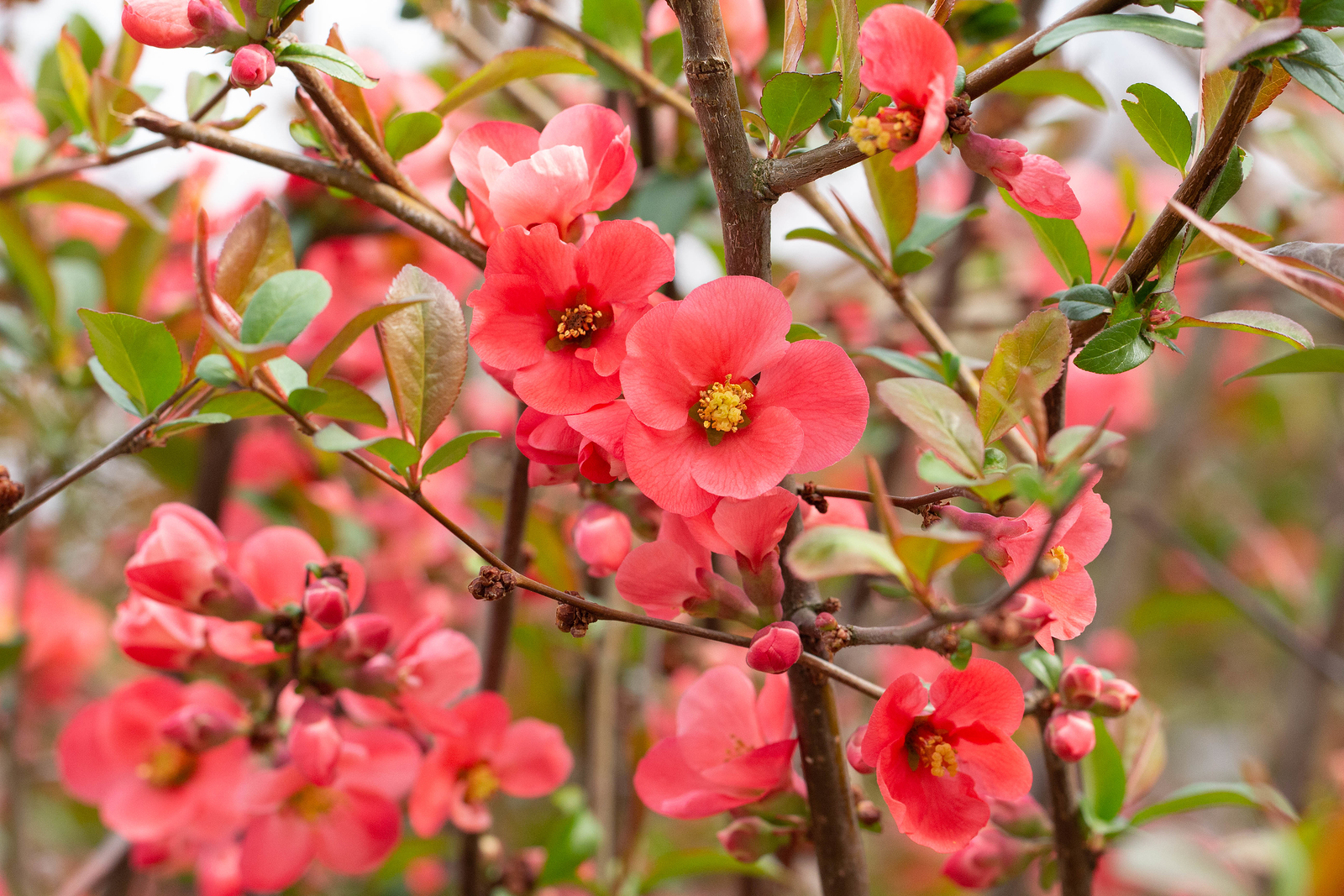 Chaenomeles spp. (flowering quince). Single, semi-double, or double flowers range from white to pink, red, or orange. Slightly angular branches. Flowers open before or just after leaves unfold. Grows 3 to 6 feet tall and wide. Full sun. Zones 4-9.
Chaenomeles spp. (flowering quince). Single, semi-double, or double flowers range from white to pink, red, or orange. Slightly angular branches. Flowers open before or just after leaves unfold. Grows 3 to 6 feet tall and wide. Full sun. Zones 4-9.
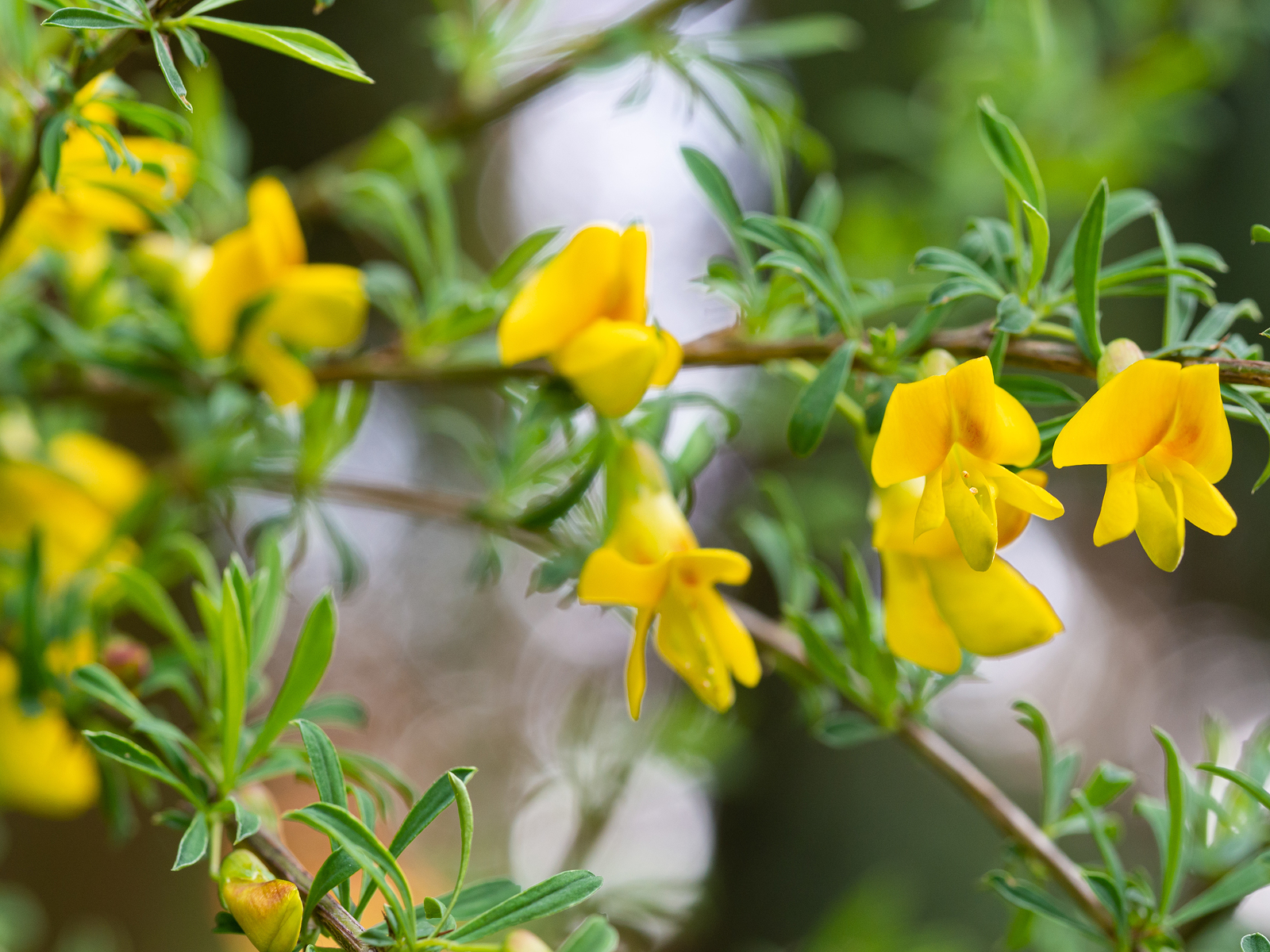 Cytisus spp. (broom). Several varieties, some invasive, but not all. Brilliant yellow pea-like flowers are fragrant; flowers can be solitary or borne in clusters. Mostly mid-green leaves. Smaller species and cultivars are suitable for a rock garden, larger ones can be grown in a shrub border. From 3 feet to 15 feet tall depending on the variety. Zones 6-9.
Cytisus spp. (broom). Several varieties, some invasive, but not all. Brilliant yellow pea-like flowers are fragrant; flowers can be solitary or borne in clusters. Mostly mid-green leaves. Smaller species and cultivars are suitable for a rock garden, larger ones can be grown in a shrub border. From 3 feet to 15 feet tall depending on the variety. Zones 6-9.
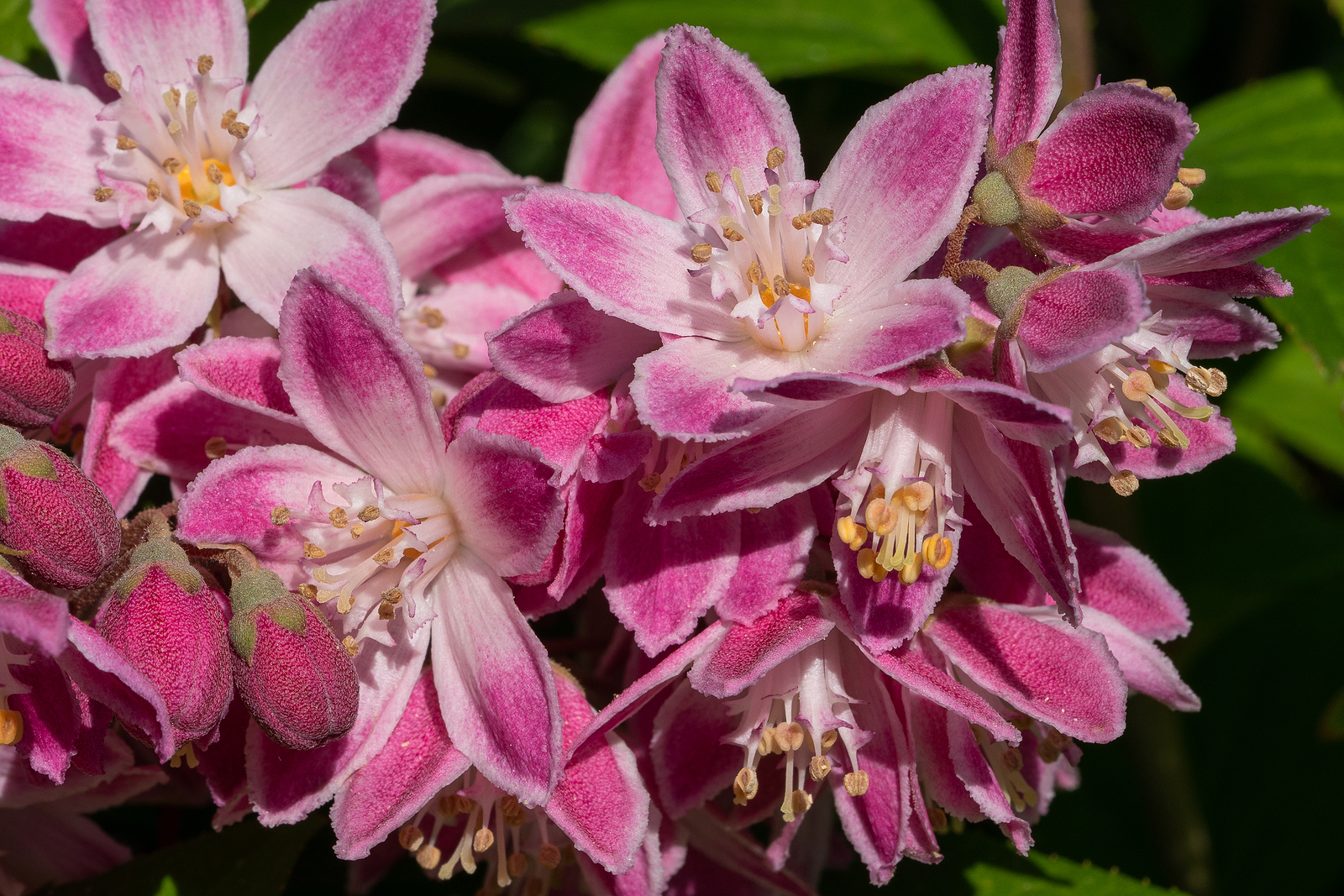 Deutzia spp. (deutzia). Flowers are usually white to pink and develop in abundance on the previous year’s wood. Leaves are toothed. Bark shreds on most kinds, giving winter interest. Lance-shaped leaves that have good fall color. From 2 to 8 feet tall and equal spread depending on the variety. Grows 3 to 6 feet tall and wide. Zones 6-8.
Deutzia spp. (deutzia). Flowers are usually white to pink and develop in abundance on the previous year’s wood. Leaves are toothed. Bark shreds on most kinds, giving winter interest. Lance-shaped leaves that have good fall color. From 2 to 8 feet tall and equal spread depending on the variety. Grows 3 to 6 feet tall and wide. Zones 6-8.
 Enkianthus spp. (enkianthus). Umbels of bell-shaped, heathlike flowers, in terminal clusters on arching branches, open in late spring. Flowers nearly all year in mild climates. Autumn leaf color is bright scarlet. Can grow to 25 feet tall and 12 feet wide. Zones 5-8.
Enkianthus spp. (enkianthus). Umbels of bell-shaped, heathlike flowers, in terminal clusters on arching branches, open in late spring. Flowers nearly all year in mild climates. Autumn leaf color is bright scarlet. Can grow to 25 feet tall and 12 feet wide. Zones 5-8.
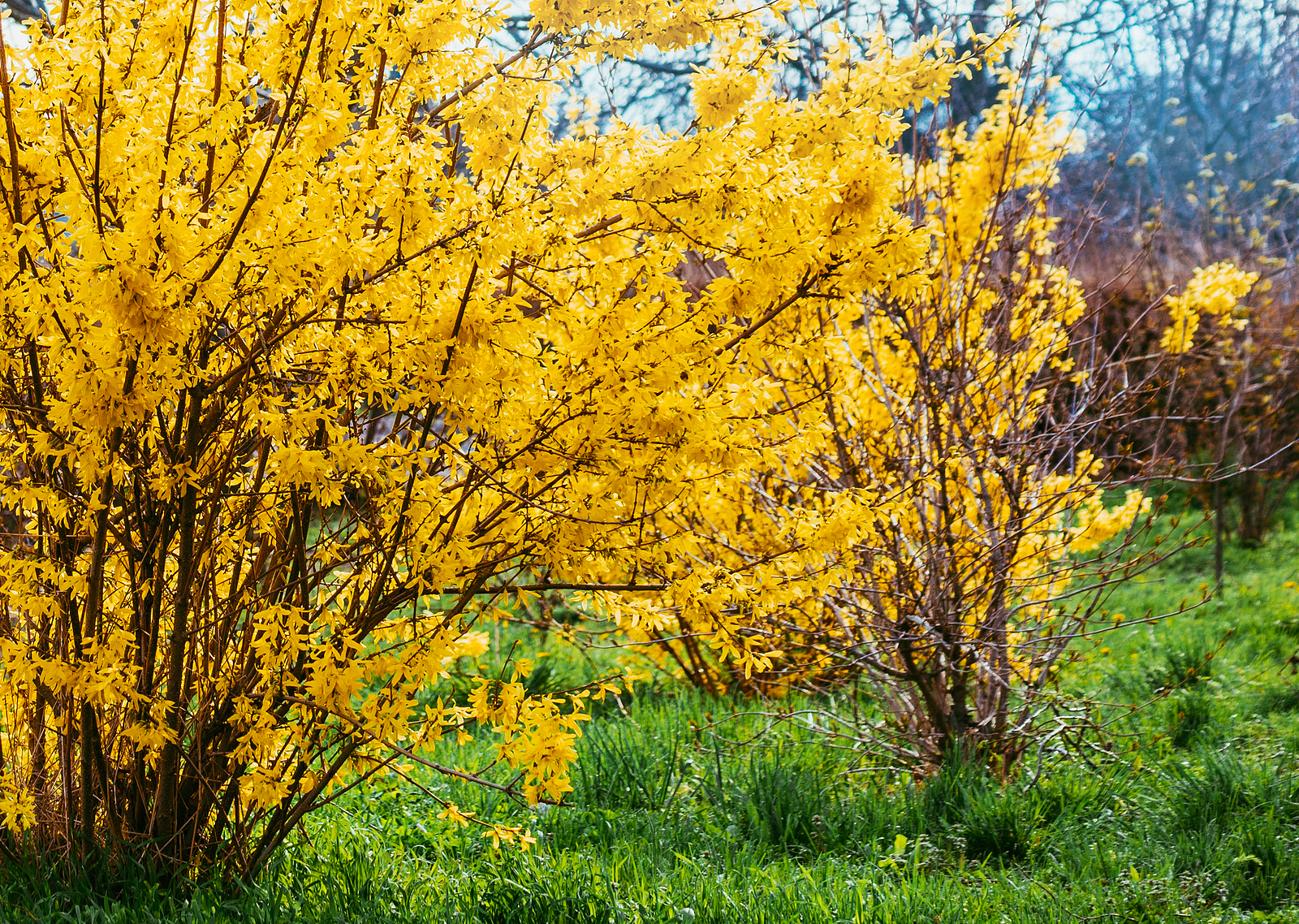 Forsythia spp. (forsythia). Yellow flowers in clusters of up to 6 produce outstanding effect in early to mid-spring when few other shrubs are in bloom. Branches are often arching or pendulous and may root where they touch the ground. Grows 6 to 10 feet tall and as wide. Zones 4-8.
Forsythia spp. (forsythia). Yellow flowers in clusters of up to 6 produce outstanding effect in early to mid-spring when few other shrubs are in bloom. Branches are often arching or pendulous and may root where they touch the ground. Grows 6 to 10 feet tall and as wide. Zones 4-8.
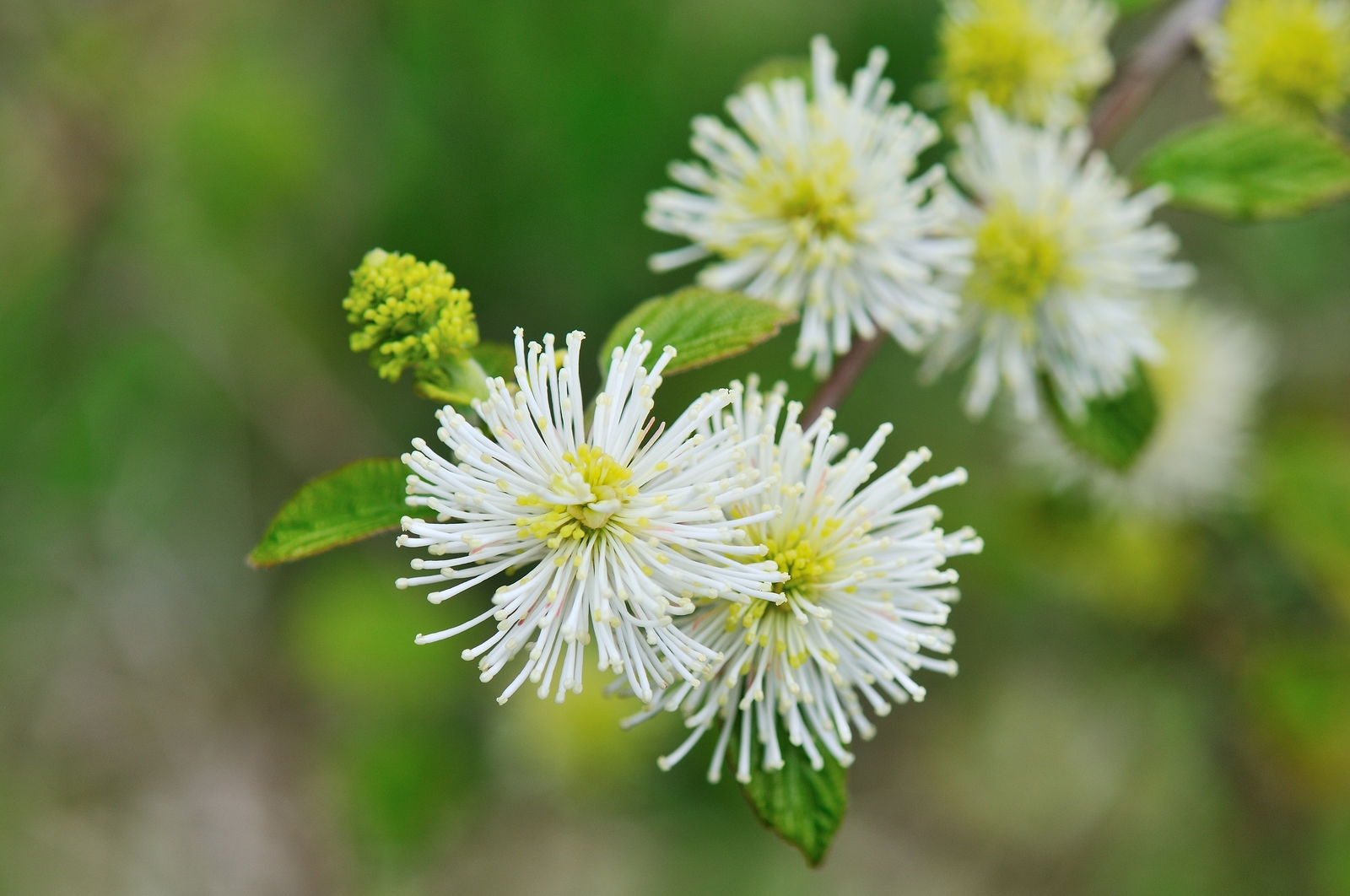 Fothergilla spp. (fothergilla). A neat shrub with bottlebrush-like white flowers spikes in mid to late spring that sometimes opens before foliage appears. In autumn leaves turn into spectacular combinations of red, orange, and yellow. Does best in a cool, moist location with somewhat peaty soil. Grows to 9 feet tall and 6 feet wide. Zones 4 – 8
Fothergilla spp. (fothergilla). A neat shrub with bottlebrush-like white flowers spikes in mid to late spring that sometimes opens before foliage appears. In autumn leaves turn into spectacular combinations of red, orange, and yellow. Does best in a cool, moist location with somewhat peaty soil. Grows to 9 feet tall and 6 feet wide. Zones 4 – 8
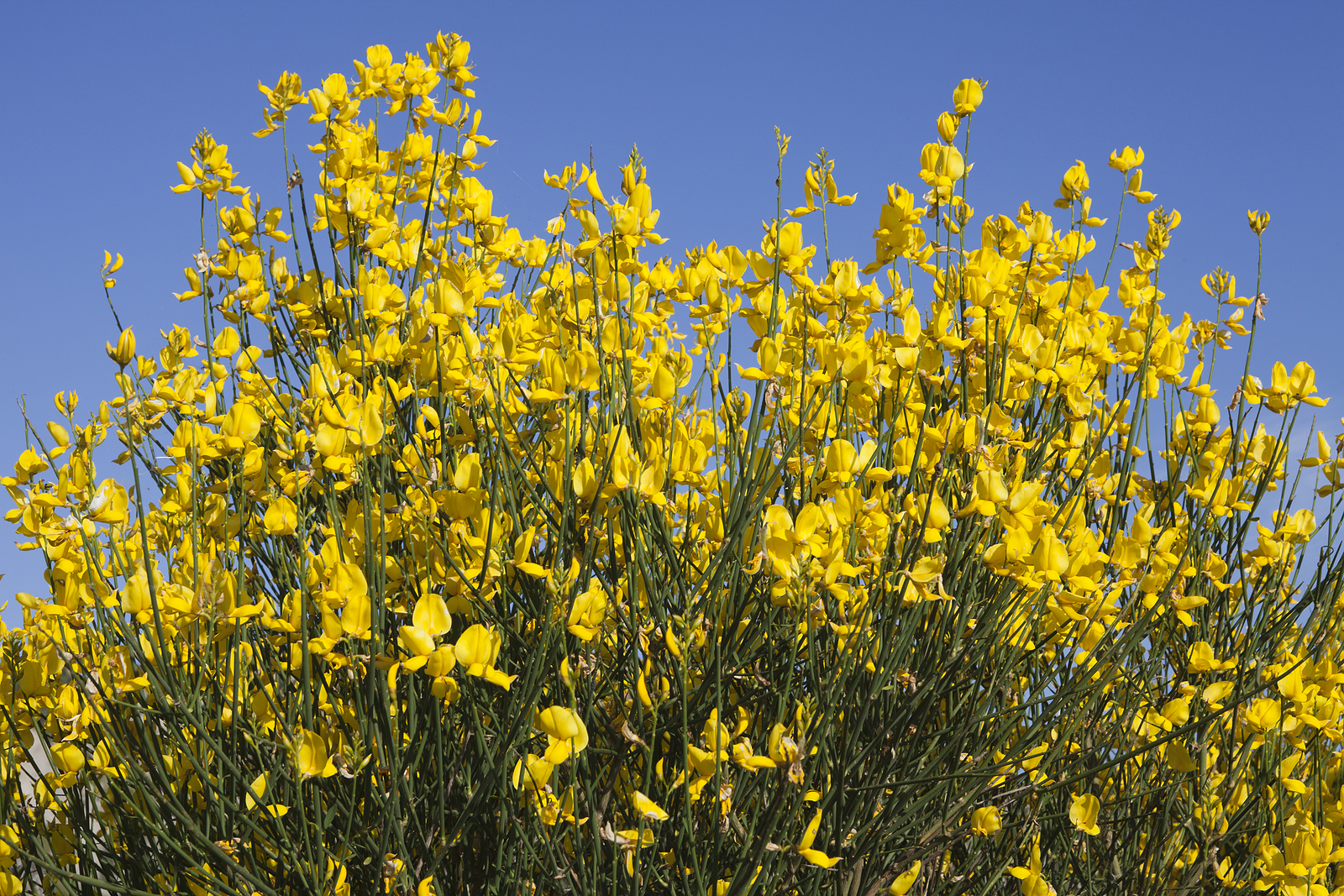 Genista spp. (woadwaxen). Pealike fragrant blossoms are usually yellow but sometimes white. Best in sunny, sandy areas. Will grow in poor soil. Does best in a hot, dry place. Grows from 2 to 6 feet tall and wide depending on the variety. Zones 4-9.
Genista spp. (woadwaxen). Pealike fragrant blossoms are usually yellow but sometimes white. Best in sunny, sandy areas. Will grow in poor soil. Does best in a hot, dry place. Grows from 2 to 6 feet tall and wide depending on the variety. Zones 4-9.
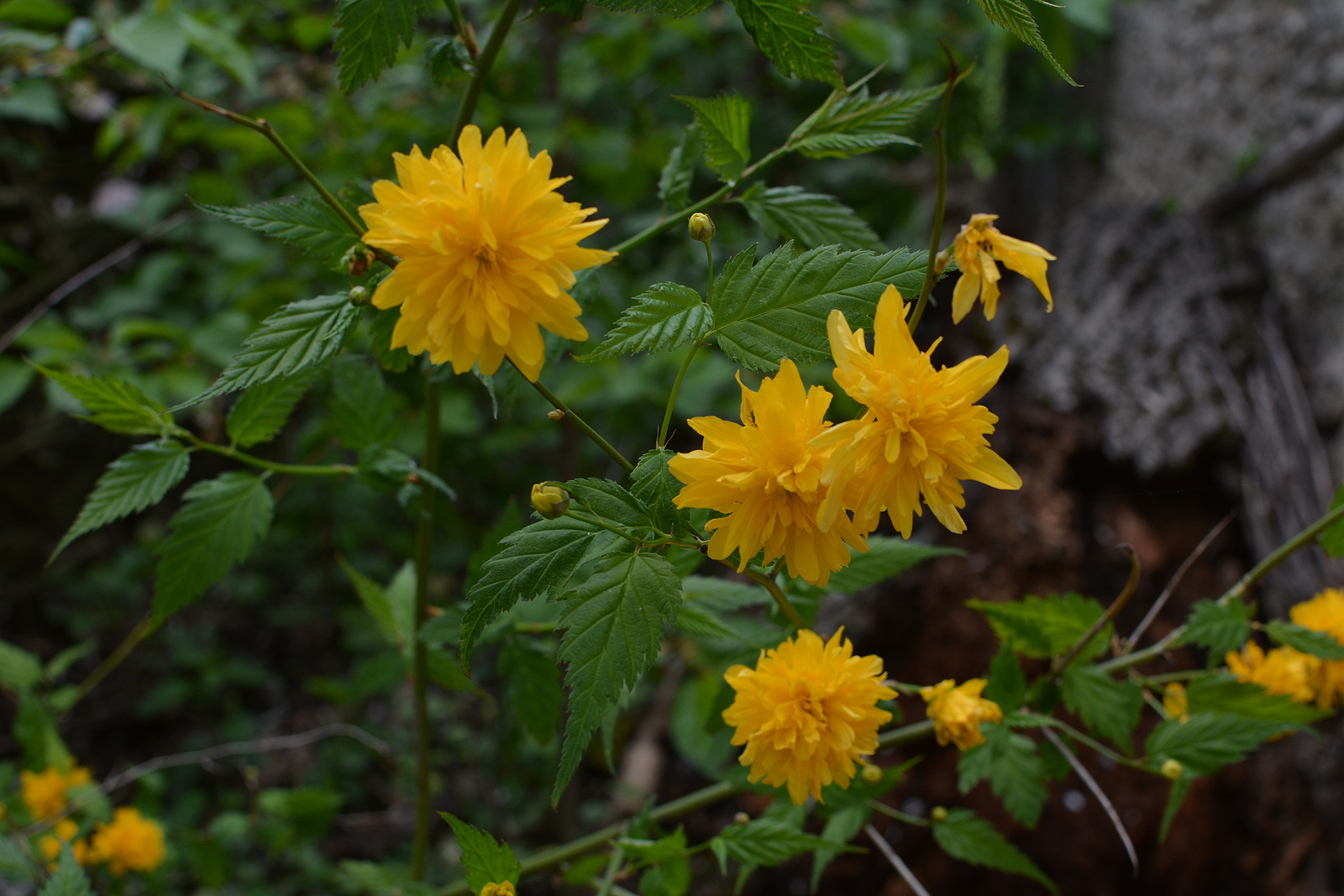 Kerria japonica (Japanese rose). Single or double yellow flowers are especially handsome in late spring. Semi-pendulous branches are green and show a particular advantage during the winter. Its bright green leaves are heavily veined and turn yellow in autumn. Grows to 8 feet tall and 6 feet wide. Zones 4-8.
Kerria japonica (Japanese rose). Single or double yellow flowers are especially handsome in late spring. Semi-pendulous branches are green and show a particular advantage during the winter. Its bright green leaves are heavily veined and turn yellow in autumn. Grows to 8 feet tall and 6 feet wide. Zones 4-8.
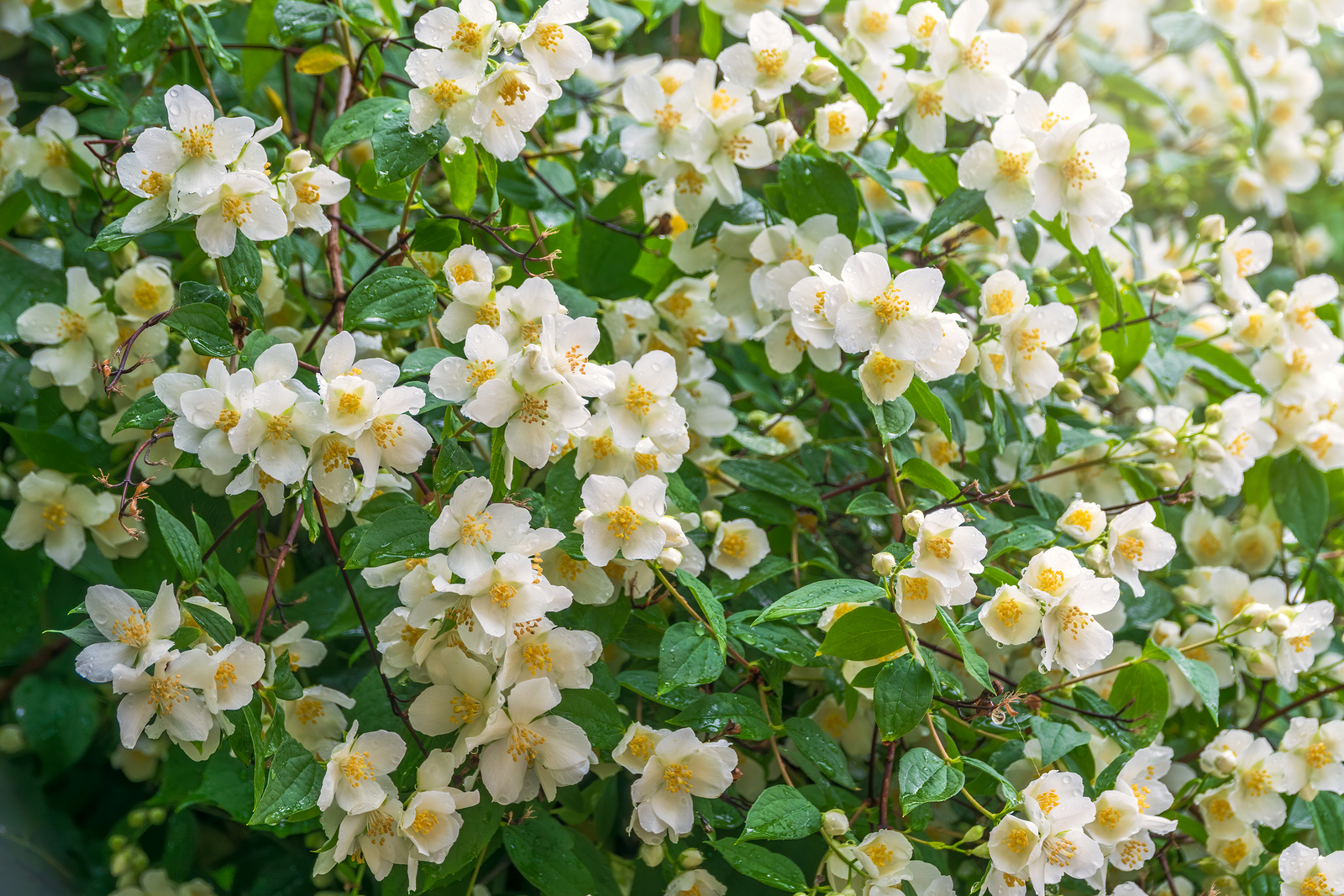 Philadelphus spp. (mock orange). Generally upright, but branches curve or droop. Attractive single or double flowers are often fragrant and make fine showing from late spring to early summer. Excellent for borders. Full sun or partial shade. Grows to 6 feet tall and 5 feet wide. Zones 3-8.
Philadelphus spp. (mock orange). Generally upright, but branches curve or droop. Attractive single or double flowers are often fragrant and make fine showing from late spring to early summer. Excellent for borders. Full sun or partial shade. Grows to 6 feet tall and 5 feet wide. Zones 3-8.
 Rhododendron spp. (azalea). Azaleas are diminutive members of the rhododendron family. Grown for their spectacular flowers which are borne singly or in lateral or terminal racemes in bright colors from pink, to red, to yellow, and white. Grow from 3 to 6 feet tall and about as wide. Zones 5-9.
Rhododendron spp. (azalea). Azaleas are diminutive members of the rhododendron family. Grown for their spectacular flowers which are borne singly or in lateral or terminal racemes in bright colors from pink, to red, to yellow, and white. Grow from 3 to 6 feet tall and about as wide. Zones 5-9.
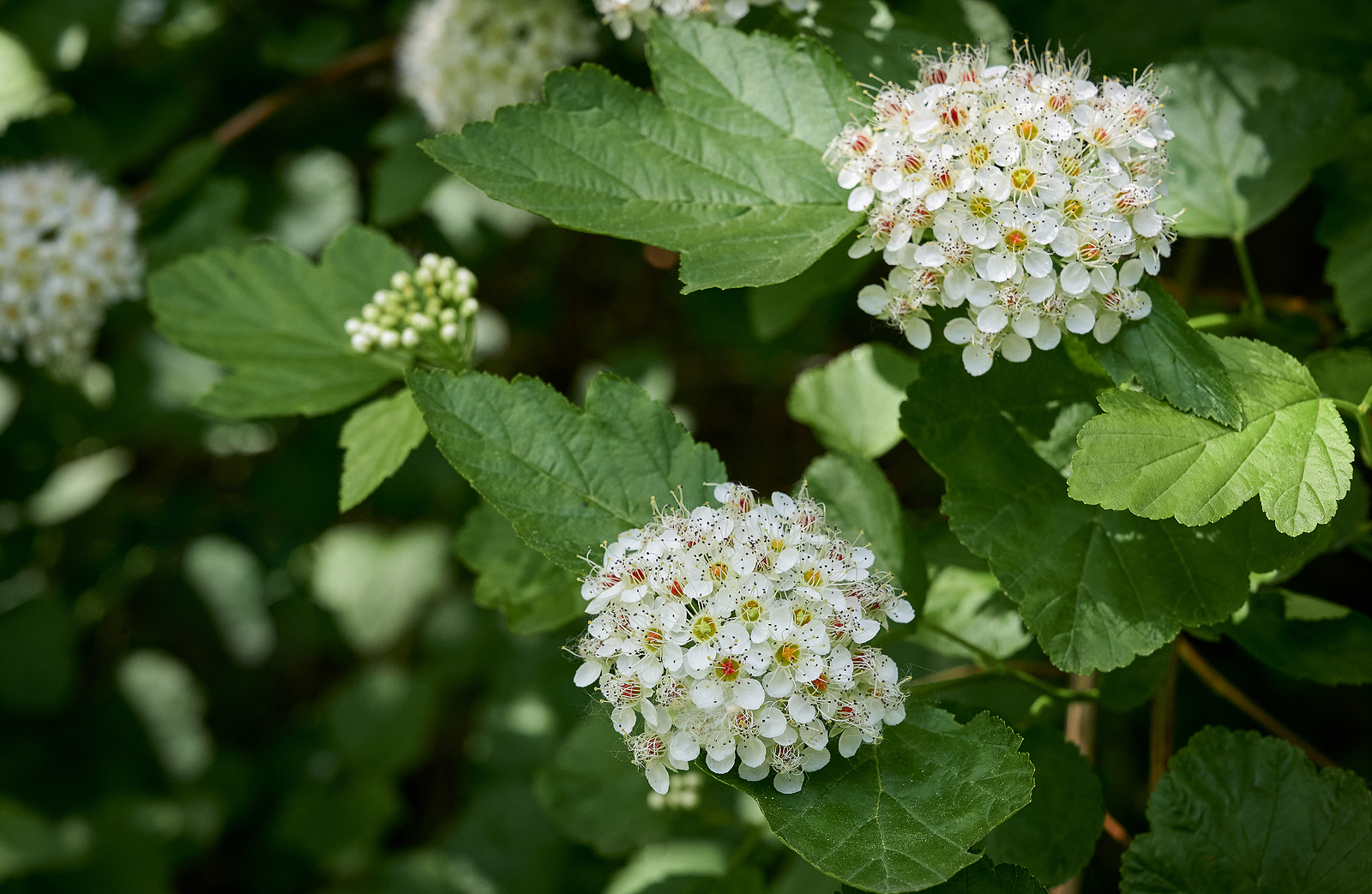 Spiraea spp. (spirea). Bears attractive flattish clusters or plumelike panicles of white, pinkish-purple, or red flowers. Fine as a clipped or unclipped hedge and well suited to city gardens, since it tolerates smog. Makes a striking single specimen plant. Grows 3 to 6 feet tall depending on the variety. Grows 3 to 6 feet tall and 3 to 5 feet wide depending on the variety. Zones 2-8.
Spiraea spp. (spirea). Bears attractive flattish clusters or plumelike panicles of white, pinkish-purple, or red flowers. Fine as a clipped or unclipped hedge and well suited to city gardens, since it tolerates smog. Makes a striking single specimen plant. Grows 3 to 6 feet tall depending on the variety. Grows 3 to 6 feet tall and 3 to 5 feet wide depending on the variety. Zones 2-8.
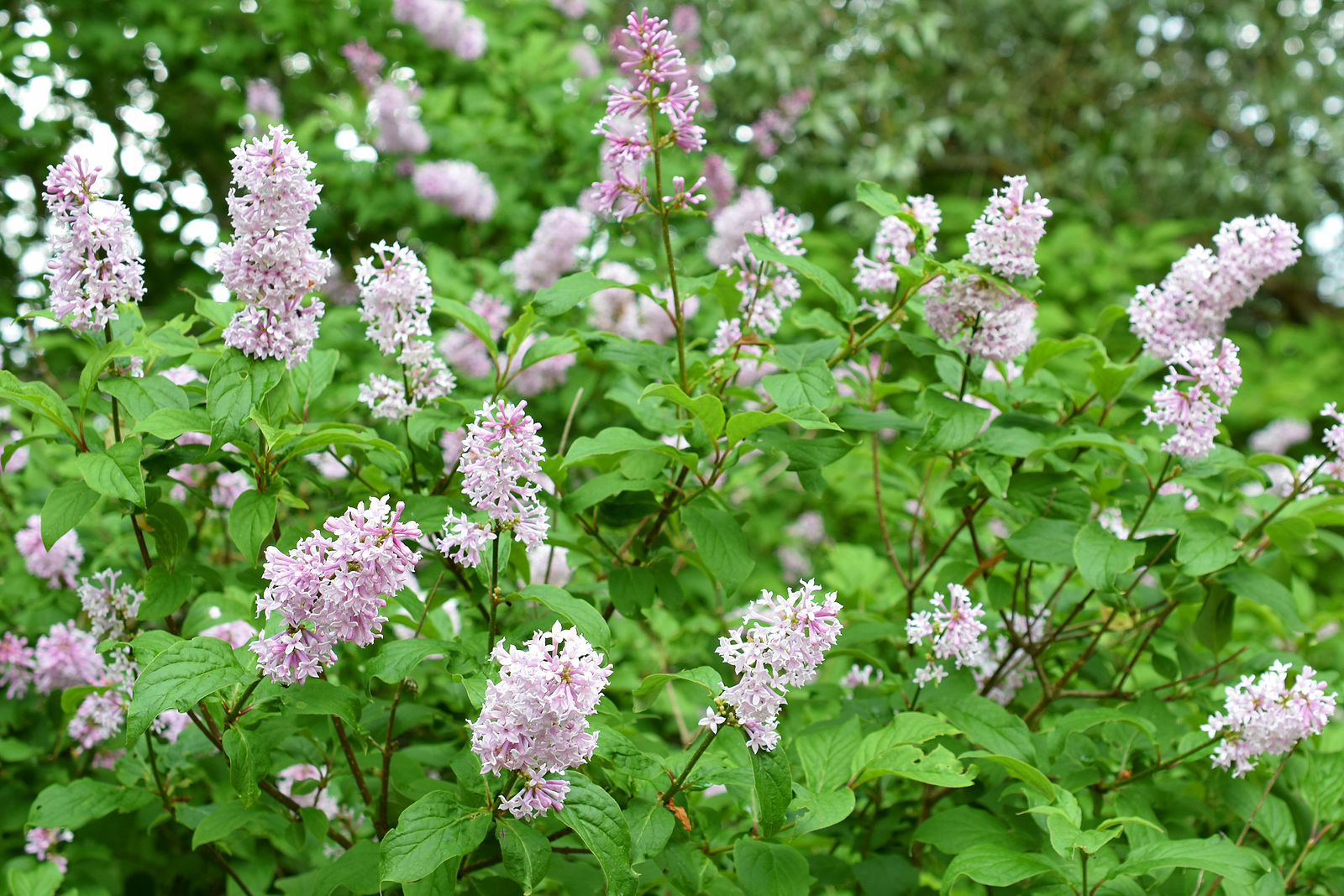 Syringa spp. (lilac). Small tubular flowers are often intensely fragrant and appear in handsome clusters. Flower colors include pale violet, blue-violet to deep purple, and pink-violet. Flowers may also be in shades of cream to yellow-white. The bloom period for lilacs may last up to 6 weeks or longer. Grows 6 to 15 feet tall. Zones 3-8.
Syringa spp. (lilac). Small tubular flowers are often intensely fragrant and appear in handsome clusters. Flower colors include pale violet, blue-violet to deep purple, and pink-violet. Flowers may also be in shades of cream to yellow-white. The bloom period for lilacs may last up to 6 weeks or longer. Grows 6 to 15 feet tall. Zones 3-8.
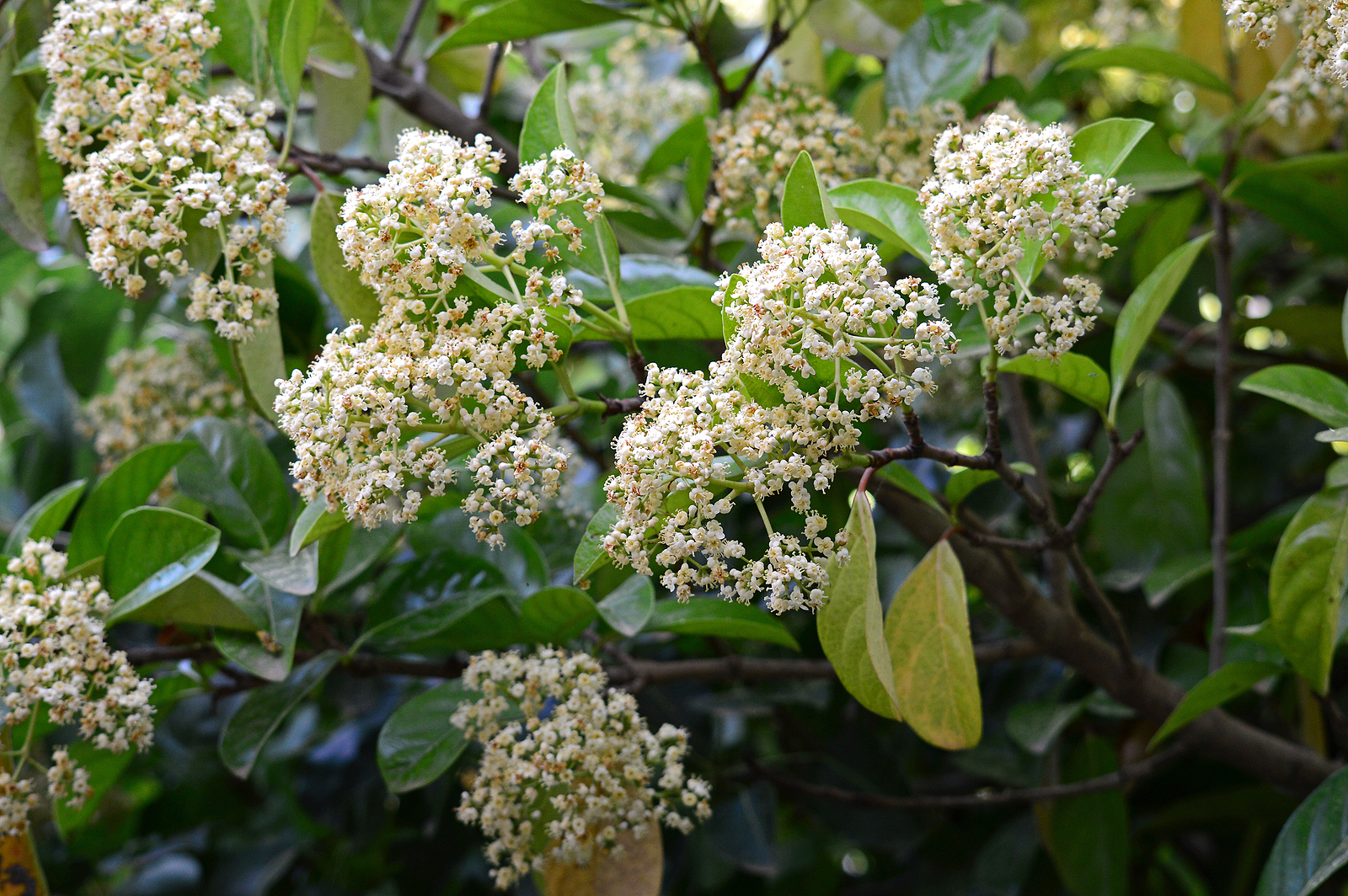 Viburnum spp. (viburnum). Small flowers are usually white and develop in attractive flat or ball-like terminal clusters. Fruits are frequently colorful. In some kinds, these fruits remain on plants into winter. A very valuable and extensive group of landscape plants. There are many improved named varieties. Grows 3 to 6 feet tall and wide. Zones 4-8.
Viburnum spp. (viburnum). Small flowers are usually white and develop in attractive flat or ball-like terminal clusters. Fruits are frequently colorful. In some kinds, these fruits remain on plants into winter. A very valuable and extensive group of landscape plants. There are many improved named varieties. Grows 3 to 6 feet tall and wide. Zones 4-8.
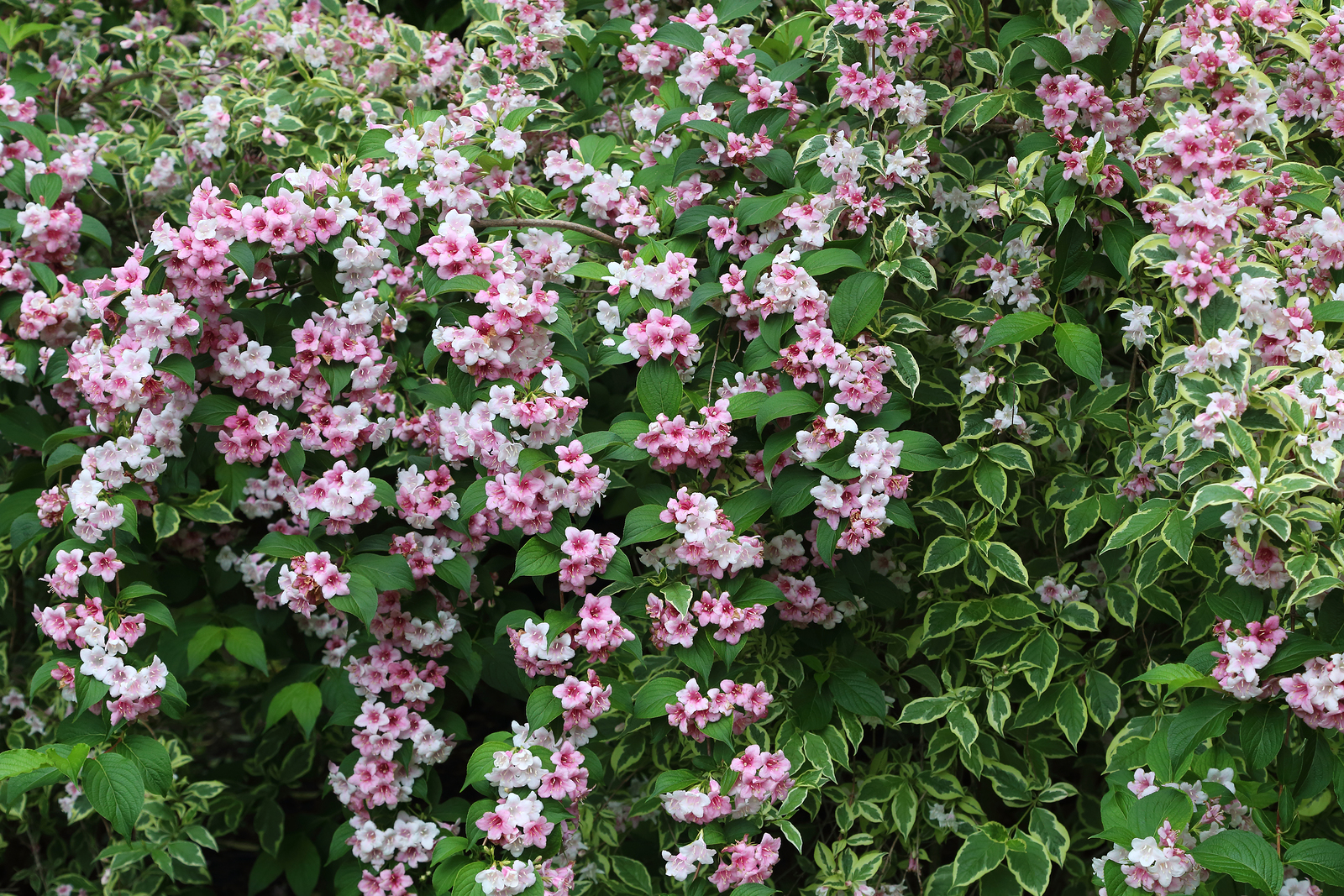 Weigela florida (old-fashioned weigela). Pink to red showy blossoms are usually funnel-shaped and more than 1 inch long in clusters of up to 3, appearing in late spring and early summer. Flowers attract hummingbirds. Grows to 6 feet tall and wide. Zones 5-9.
Weigela florida (old-fashioned weigela). Pink to red showy blossoms are usually funnel-shaped and more than 1 inch long in clusters of up to 3, appearing in late spring and early summer. Flowers attract hummingbirds. Grows to 6 feet tall and wide. Zones 5-9.
Summer-blooming shrubs
 Aesculus parviflora (bottlebrush buckeye). Ornate pink stamens protrude from white flowers to make this a very showy plant when in bloom. Very attractive to butterflies, especially swallowtails. Grows to 10 feet tall and 15 feet wide. Hardiness: Zones 4 – 8.
Aesculus parviflora (bottlebrush buckeye). Ornate pink stamens protrude from white flowers to make this a very showy plant when in bloom. Very attractive to butterflies, especially swallowtails. Grows to 10 feet tall and 15 feet wide. Hardiness: Zones 4 – 8.
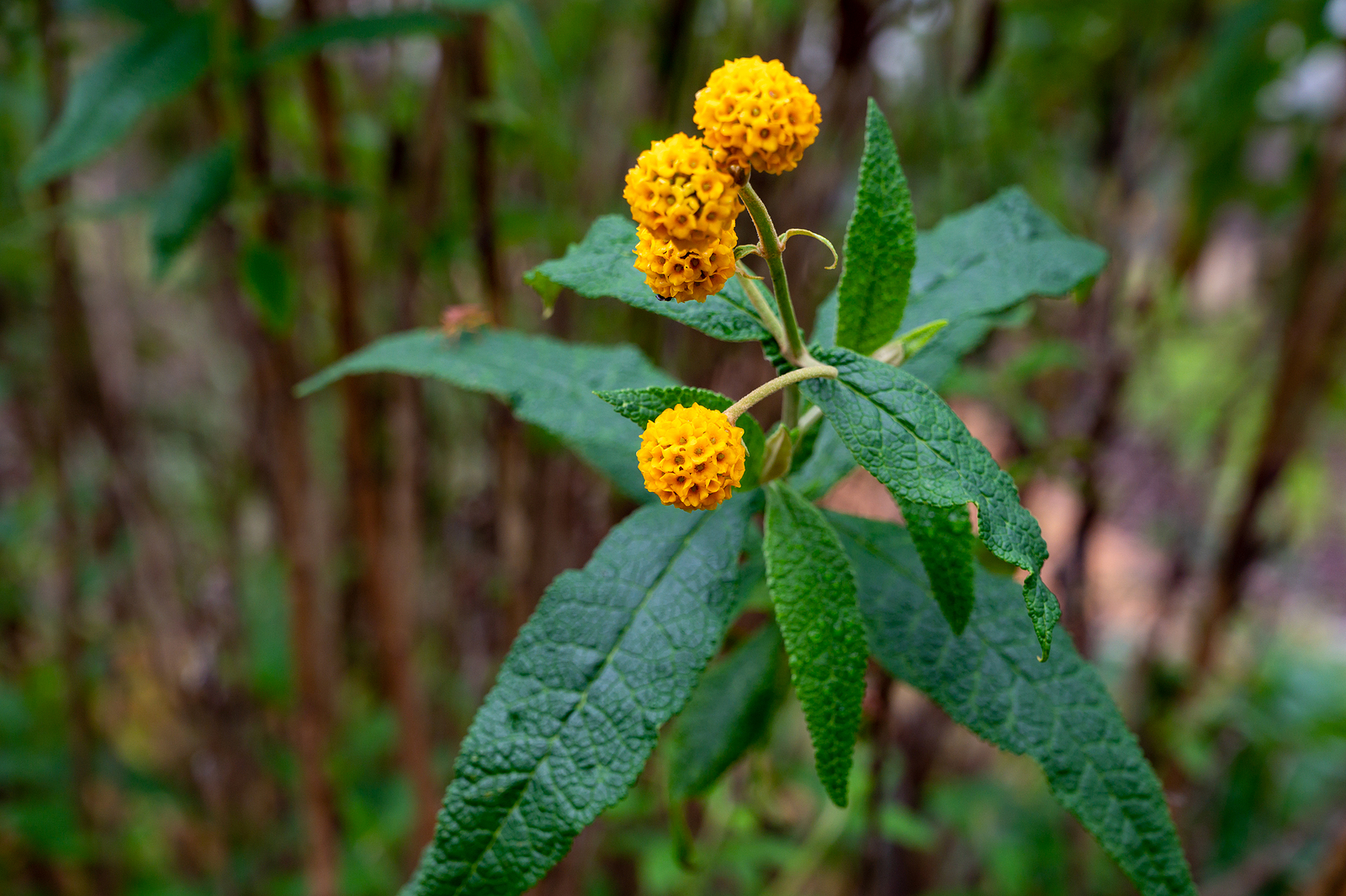 Buddleia globosa (globe butterfly bush). Also called the orange ball tree it bears dense, rounded clusters of fragrant dark orange and yellow flowers. Grows to 15 feet tall and wide. Zones 7-9.
Buddleia globosa (globe butterfly bush). Also called the orange ball tree it bears dense, rounded clusters of fragrant dark orange and yellow flowers. Grows to 15 feet tall and wide. Zones 7-9.
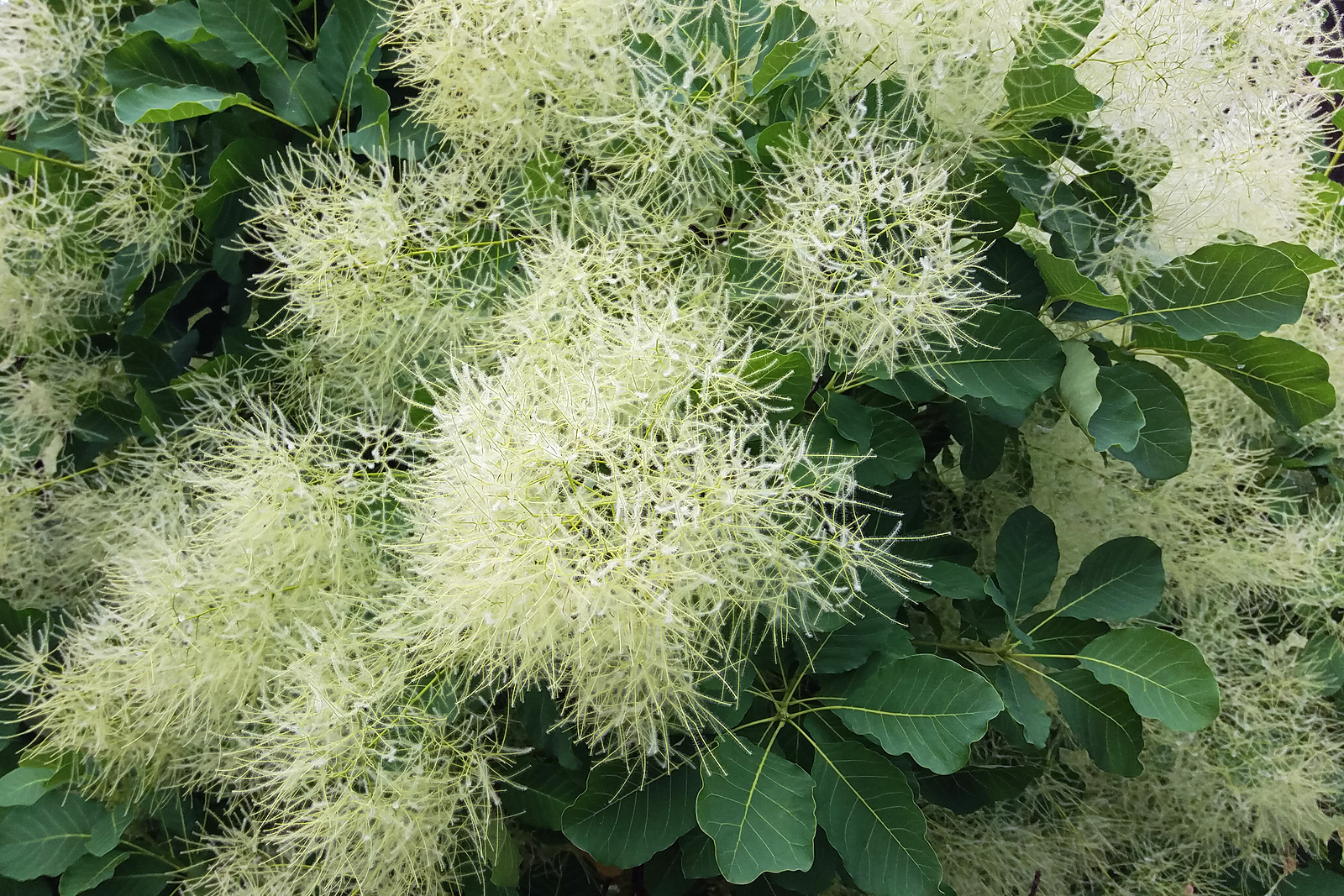 Cotinus spp. (smokebush). A large shrub, sometimes grown as a tree, is noted for its plume-like hairy panicles that appear in summer producing a smoke-like effect. Grows 10 to 15 feet tall and wide. Grow in a shrub border or as specimen plants, or plant in groups. Best in full sun. Zones 5-9.
Cotinus spp. (smokebush). A large shrub, sometimes grown as a tree, is noted for its plume-like hairy panicles that appear in summer producing a smoke-like effect. Grows 10 to 15 feet tall and wide. Grow in a shrub border or as specimen plants, or plant in groups. Best in full sun. Zones 5-9.
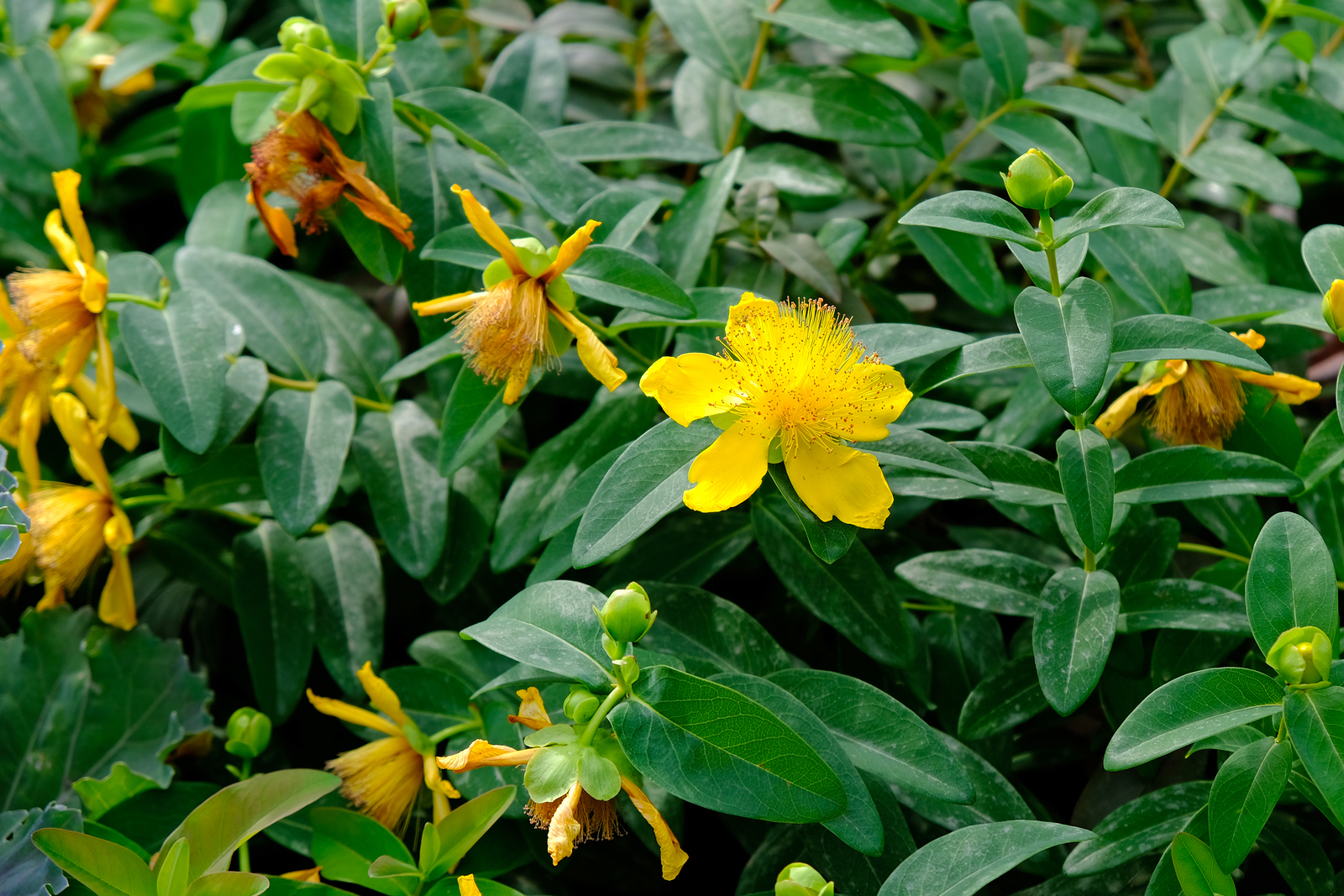 Hypericum spp. (St. John’s wort). Long-lasting, cup-shaped flowers appear in clusters in shades of pale to bright yellow. Makes outstanding addition to borders or rock gardens. Most kinds will live in dry, sandy soil. Plant in full sun or shade. Grows 1 to 3 feet tall and wide. Zones 5-9.
Hypericum spp. (St. John’s wort). Long-lasting, cup-shaped flowers appear in clusters in shades of pale to bright yellow. Makes outstanding addition to borders or rock gardens. Most kinds will live in dry, sandy soil. Plant in full sun or shade. Grows 1 to 3 feet tall and wide. Zones 5-9.
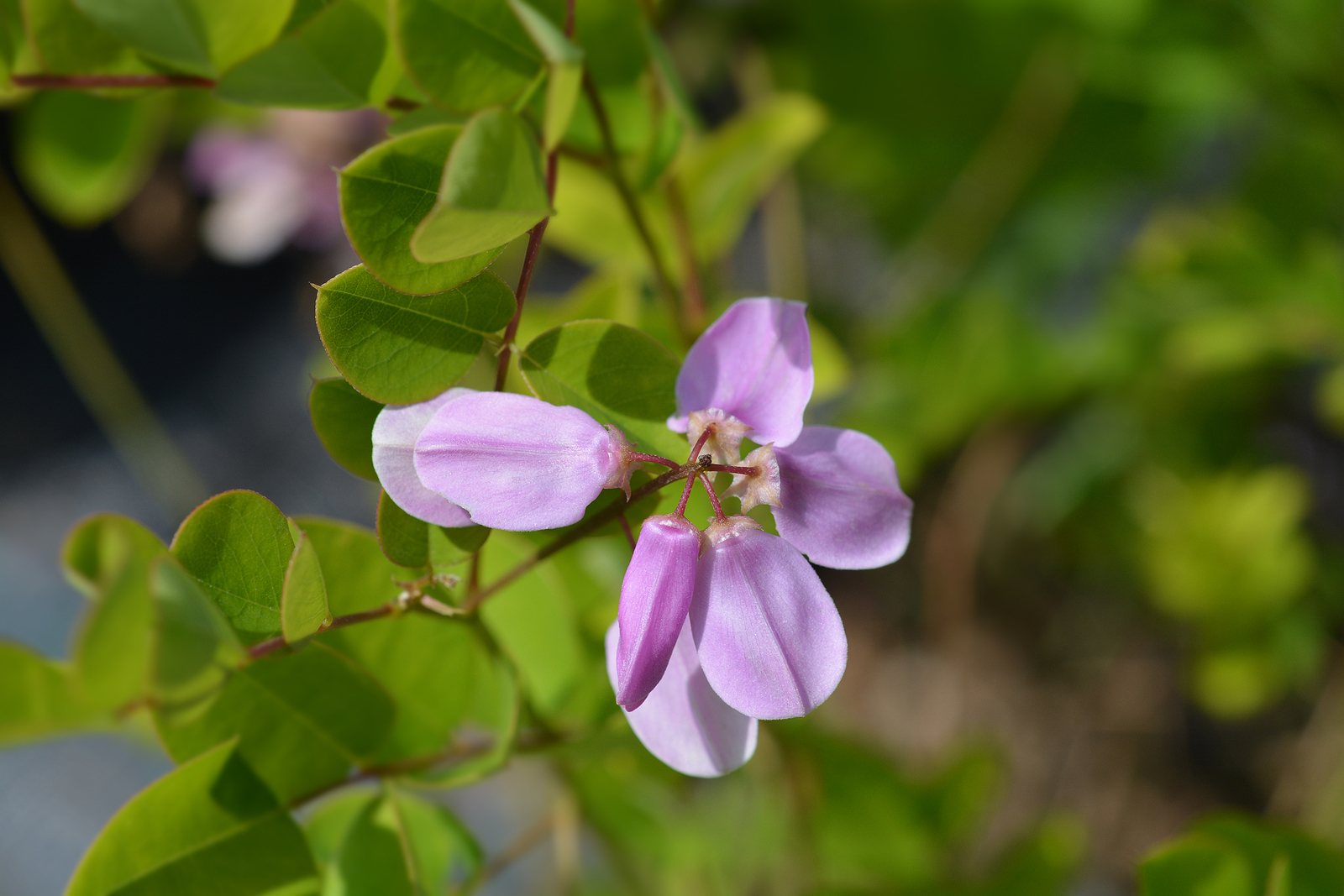 Indigofera kirilowii (kirilow indigo). Pealike blossoms develop in racemes in angles formed between leaves and stems. Can be used as a specimen or trained against a wall. Best planted in full sun in well-drained to sandy soil. Grows 3 to 4 feet tall and wide. Zones 4-8.
Indigofera kirilowii (kirilow indigo). Pealike blossoms develop in racemes in angles formed between leaves and stems. Can be used as a specimen or trained against a wall. Best planted in full sun in well-drained to sandy soil. Grows 3 to 4 feet tall and wide. Zones 4-8.
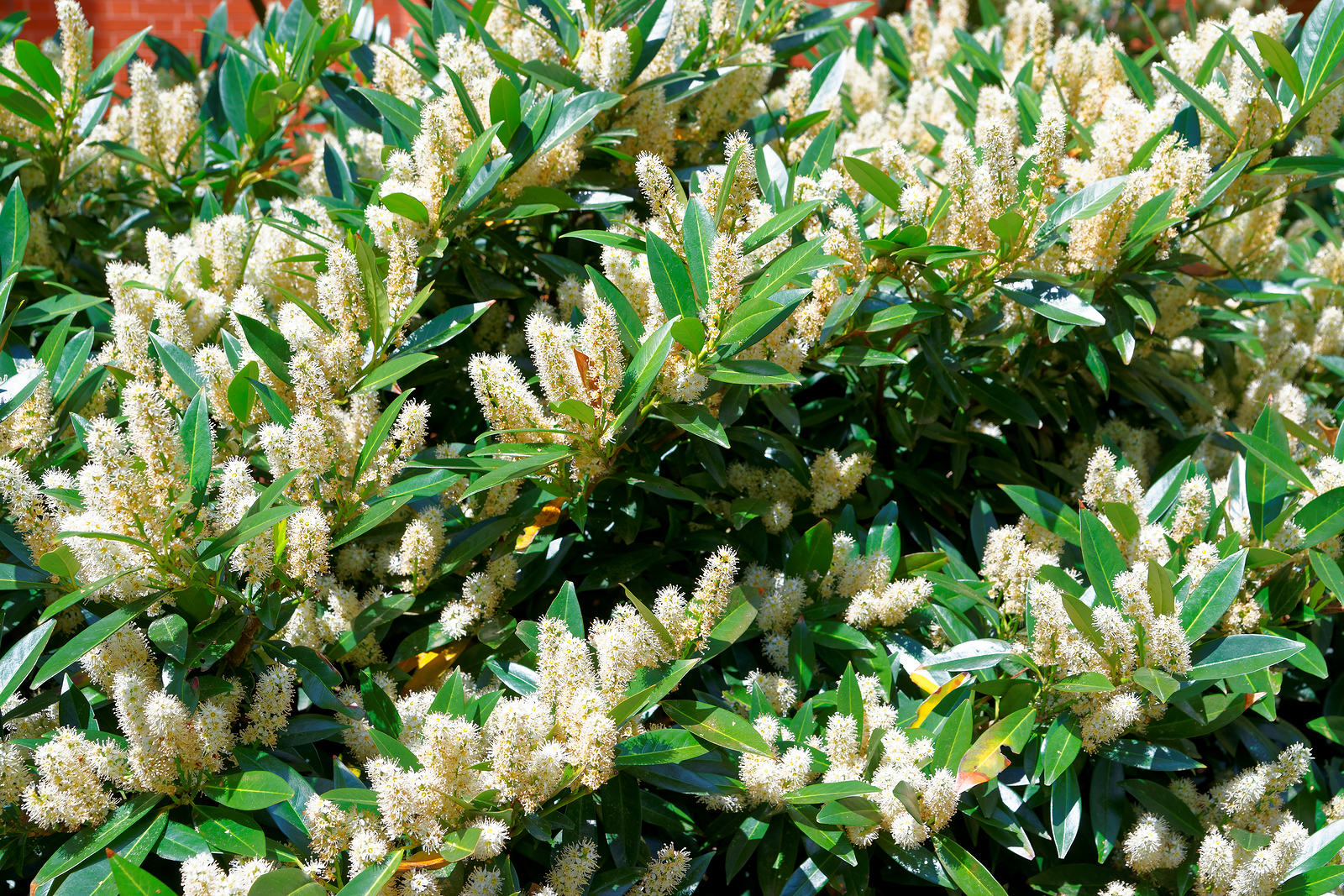 Itea spp. (sweetspire). Provides fragrant spire-like flowers in June and July when few other shrubs are in bloom. Grows best in moist soils but is adaptable and quite drought tolerant. Plant in full sun or partial shade. Grows 3 to 6 feet tall and 5 to 7 feet wide. Zones 5-9.
Itea spp. (sweetspire). Provides fragrant spire-like flowers in June and July when few other shrubs are in bloom. Grows best in moist soils but is adaptable and quite drought tolerant. Plant in full sun or partial shade. Grows 3 to 6 feet tall and 5 to 7 feet wide. Zones 5-9.
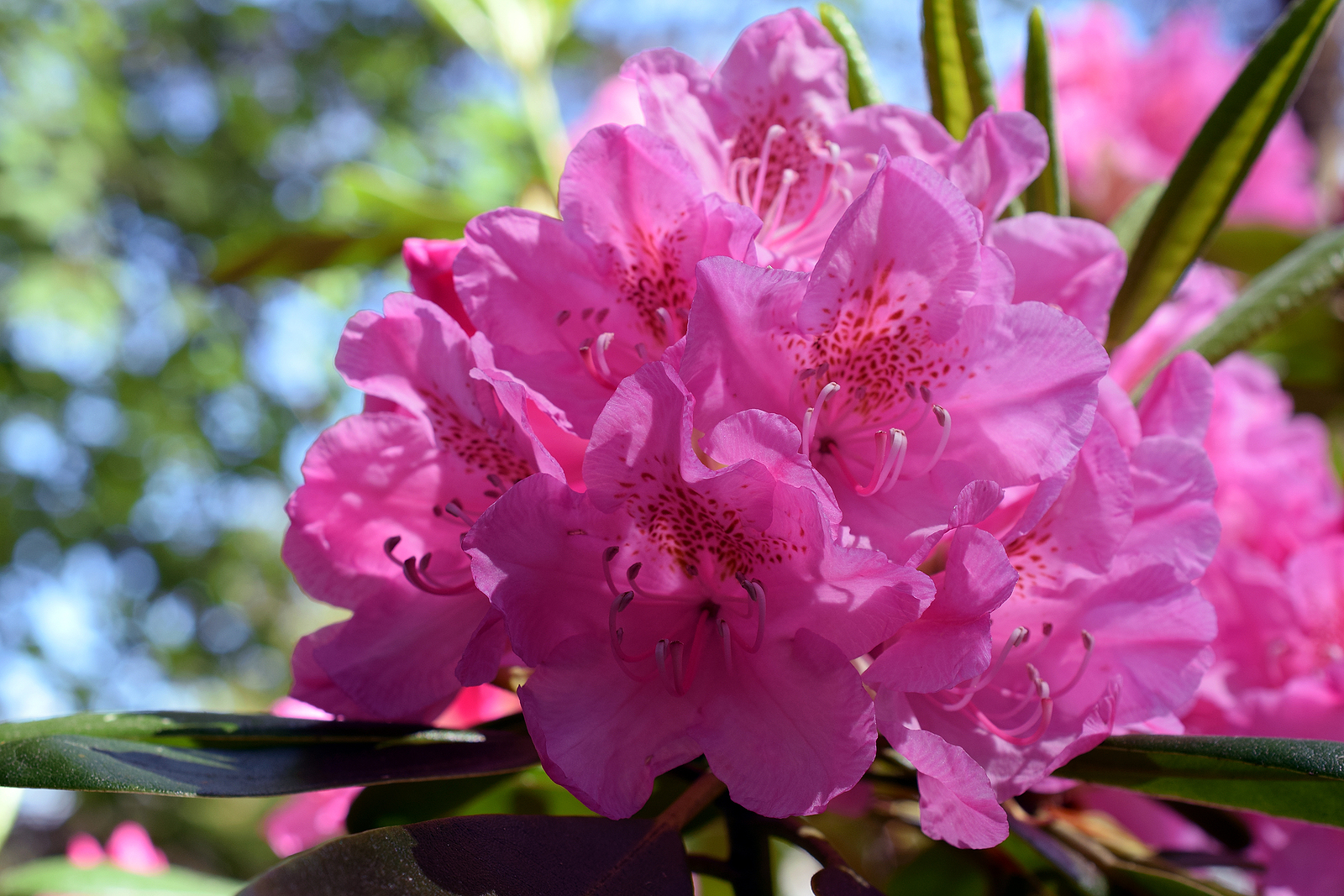 Rhododendron viscosum (swamp azalea). Deciduous shrub very late in the season bears trusses of 4 to 12 narrowly tubular funnel-shaped, fragrant, pink suffused white flowers. Grows to 8 feet tall and wide. Zones 3-9.
Rhododendron viscosum (swamp azalea). Deciduous shrub very late in the season bears trusses of 4 to 12 narrowly tubular funnel-shaped, fragrant, pink suffused white flowers. Grows to 8 feet tall and wide. Zones 3-9.
 Rosa spp. (shrub rose). Shrub roses are a diverse group that includes modern hybrids and species; usually larger than hybrid tea roses, with often prickly stems. Usually scented, singe to double flowers borne in few to many clusters in spring or early summer. Ideal for a border or bed, or hedge. Zones 5-9.
Rosa spp. (shrub rose). Shrub roses are a diverse group that includes modern hybrids and species; usually larger than hybrid tea roses, with often prickly stems. Usually scented, singe to double flowers borne in few to many clusters in spring or early summer. Ideal for a border or bed, or hedge. Zones 5-9.
Late summer- and fall-blooming shrubs
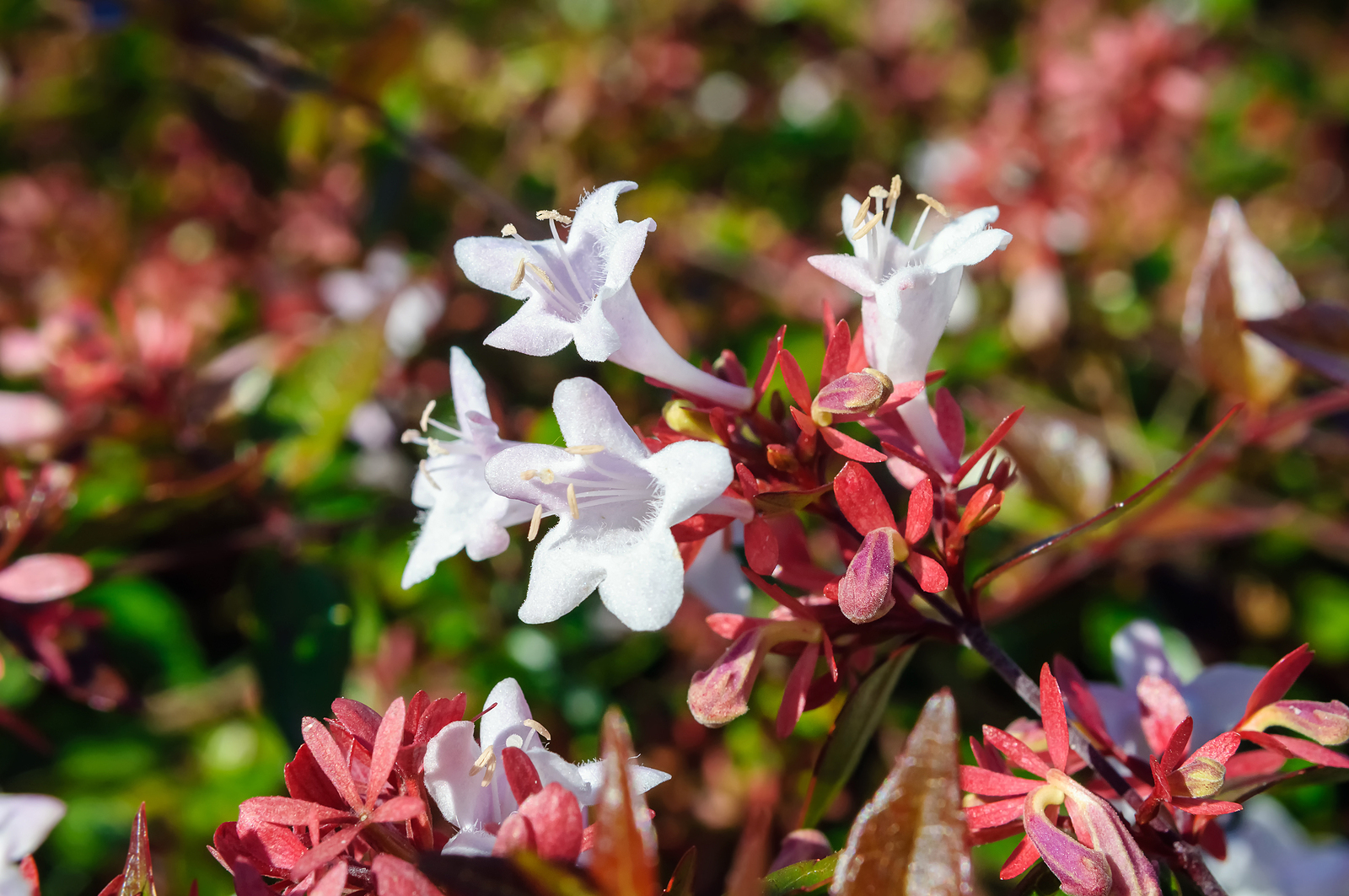 Abelia X grandiflora (glossy abelia). Glossy abelia is a dense, semi-evergreen shrub that bears a profusion of delicate, lightly fragrant, funnel-shaped white and pink flowers. Dark green ovate or rounded leaves are opposite and turn bronze-purple in fall. Abelia grows 4 to 8 feet (1.2-2.4m) tall and 4 to 5 feet (1.2-1.5m) wide. It is densely branched and is a good choice for an informal flowering hedge. Set container-grown glossy abelia in the garden in spring or fall. Root greenwood cuttings in early summer, or semi-ripe cuttings in late summer. Two cultivars of Abelia grandiflora — ‘Sherwoodii’ and ‘Francis Mason’– are compact growers to from 3 to 5 feet tall.
Abelia X grandiflora (glossy abelia). Glossy abelia is a dense, semi-evergreen shrub that bears a profusion of delicate, lightly fragrant, funnel-shaped white and pink flowers. Dark green ovate or rounded leaves are opposite and turn bronze-purple in fall. Abelia grows 4 to 8 feet (1.2-2.4m) tall and 4 to 5 feet (1.2-1.5m) wide. It is densely branched and is a good choice for an informal flowering hedge. Set container-grown glossy abelia in the garden in spring or fall. Root greenwood cuttings in early summer, or semi-ripe cuttings in late summer. Two cultivars of Abelia grandiflora — ‘Sherwoodii’ and ‘Francis Mason’– are compact growers to from 3 to 5 feet tall.
 Buddleia davidii (butterfly bush). Mid- to late-summer blooming butterfly bush (Buddleia) needs regular deadheading to encourage new blooms. It’s not done often but butterfly bush can be trained to a single stem or espaliered. Plant in full sun in loamy, moisture-retentive soil for best blooms. This is ‘Nanho Blue’ which grows to just 4 feet (1.2m) tall; many Buddleias grow to 8 feet (2.4m) or more.
Buddleia davidii (butterfly bush). Mid- to late-summer blooming butterfly bush (Buddleia) needs regular deadheading to encourage new blooms. It’s not done often but butterfly bush can be trained to a single stem or espaliered. Plant in full sun in loamy, moisture-retentive soil for best blooms. This is ‘Nanho Blue’ which grows to just 4 feet (1.2m) tall; many Buddleias grow to 8 feet (2.4m) or more.
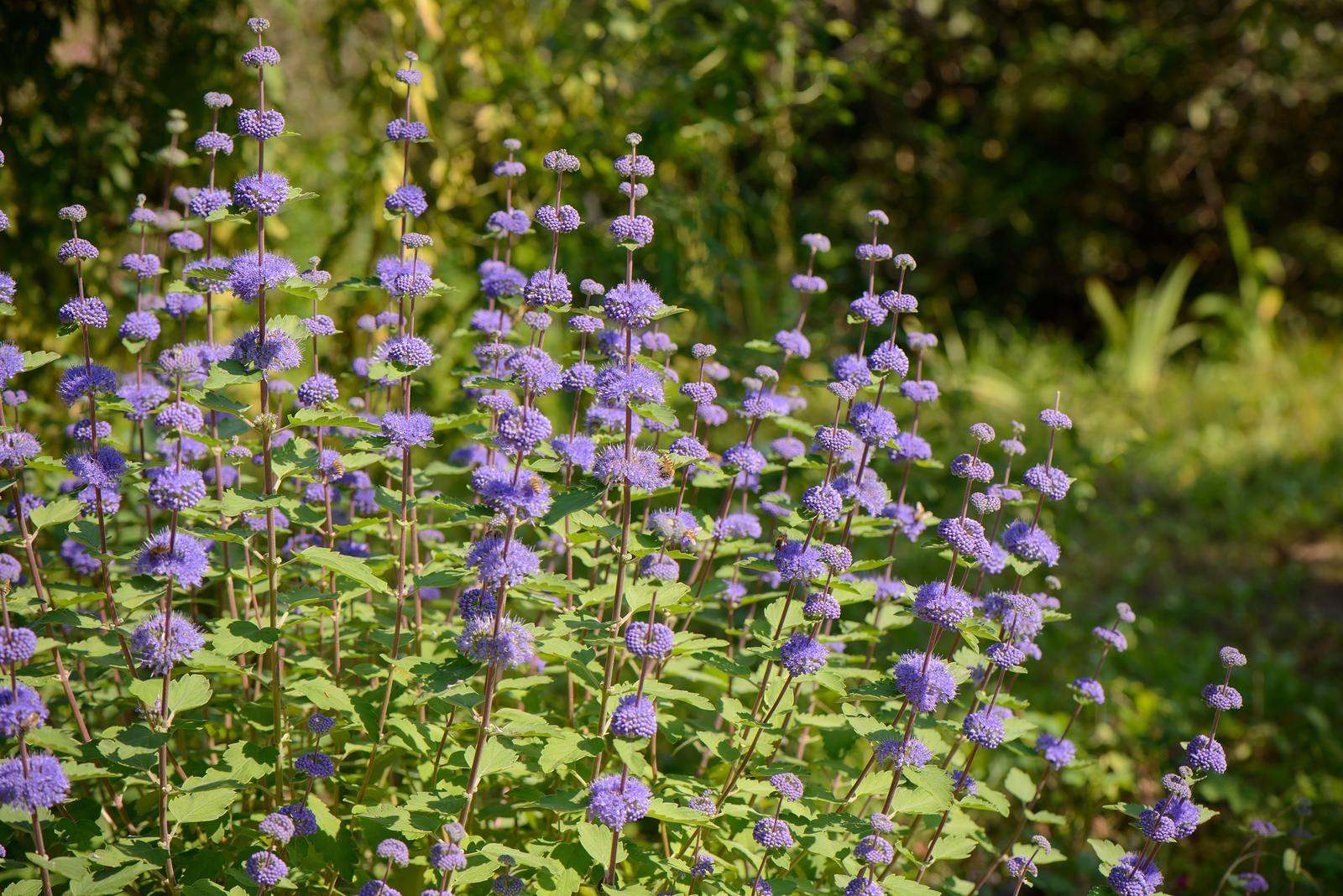 Caryopteris X clandonensis (bluebeard). Caryopteris — commonly known as bluebeard or blue spirea — is a small deciduous shrub often treated as a perennial. Include Caryopteris in a perennial border or grow it as a low hedge. It’s best known for its frothy, rounded flower clusters that appear in mid-summer. The flowers appear against handsome, gray-green, fine-textured foliage that emits a pleasant eucalyptus-like fragrance with rubbed. Flowers are borne on the current year’s shoots. Often the plant dies back to the ground in winter. Set container-grown plants in the garden in spring or autumn. Sow seed in autumn in containers in coldframe. Take softwood cuttings of Caryopteris in late spring. Caryopteris grows best in Zones 6 to 9; it’s root hardy to Zone 4.
Caryopteris X clandonensis (bluebeard). Caryopteris — commonly known as bluebeard or blue spirea — is a small deciduous shrub often treated as a perennial. Include Caryopteris in a perennial border or grow it as a low hedge. It’s best known for its frothy, rounded flower clusters that appear in mid-summer. The flowers appear against handsome, gray-green, fine-textured foliage that emits a pleasant eucalyptus-like fragrance with rubbed. Flowers are borne on the current year’s shoots. Often the plant dies back to the ground in winter. Set container-grown plants in the garden in spring or autumn. Sow seed in autumn in containers in coldframe. Take softwood cuttings of Caryopteris in late spring. Caryopteris grows best in Zones 6 to 9; it’s root hardy to Zone 4.
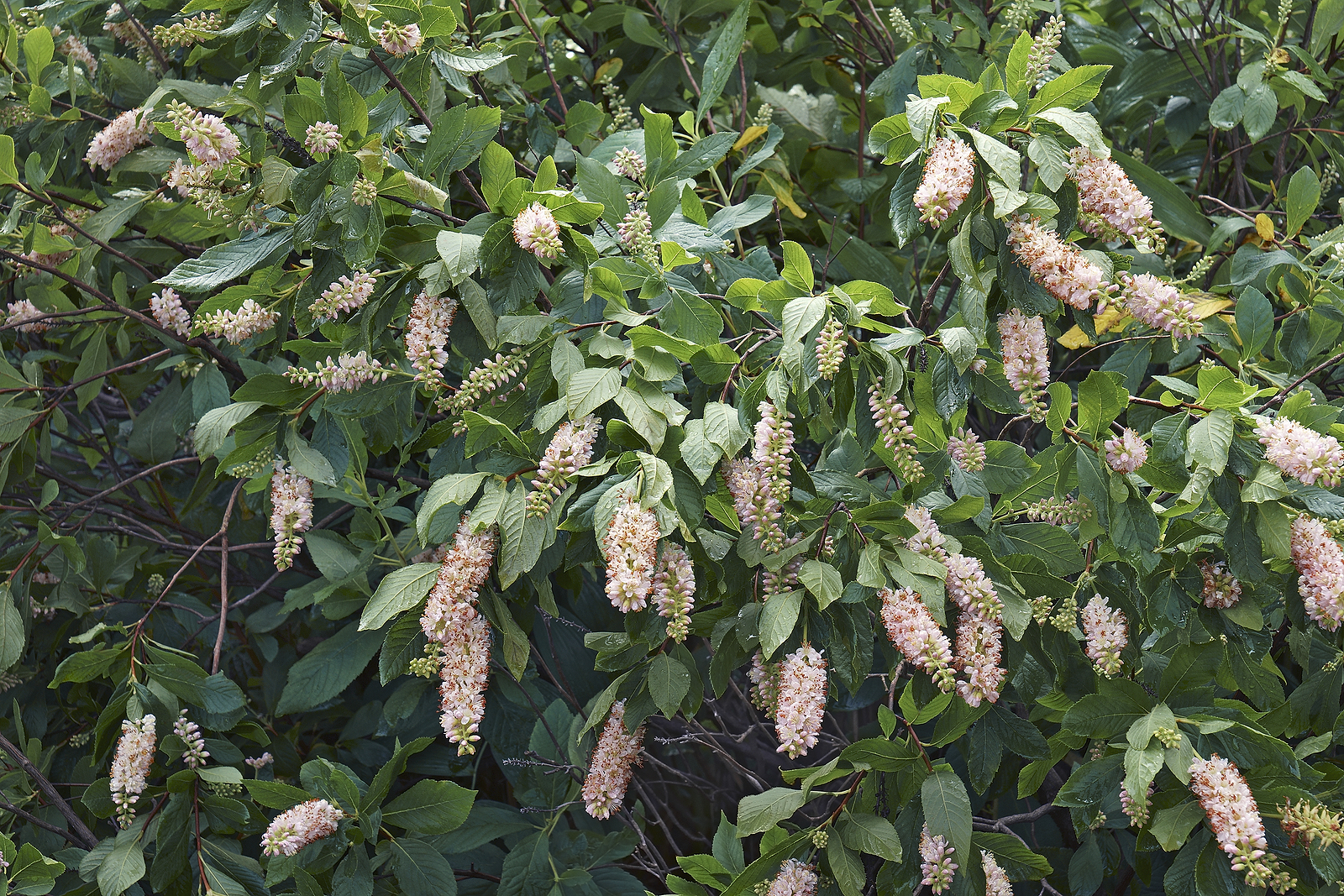 Clethra alnifolia (summer-sweet). Clethra–commonly called Summersweet–is a deciduous shrub that produces an abundance of tiny delightfully fragrant white or yellowish-white blossoms in dense 3- to 5-inch (7.6-12cm) spikes in late summer. The flowering season lasts for four to six weeks. Clethra is well suited for planting in mixed borders and woodland gardens. Plants can be grown indoors in cold winter regions and moved outdoors in summer. Best in Zones 4-9.
Clethra alnifolia (summer-sweet). Clethra–commonly called Summersweet–is a deciduous shrub that produces an abundance of tiny delightfully fragrant white or yellowish-white blossoms in dense 3- to 5-inch (7.6-12cm) spikes in late summer. The flowering season lasts for four to six weeks. Clethra is well suited for planting in mixed borders and woodland gardens. Plants can be grown indoors in cold winter regions and moved outdoors in summer. Best in Zones 4-9.
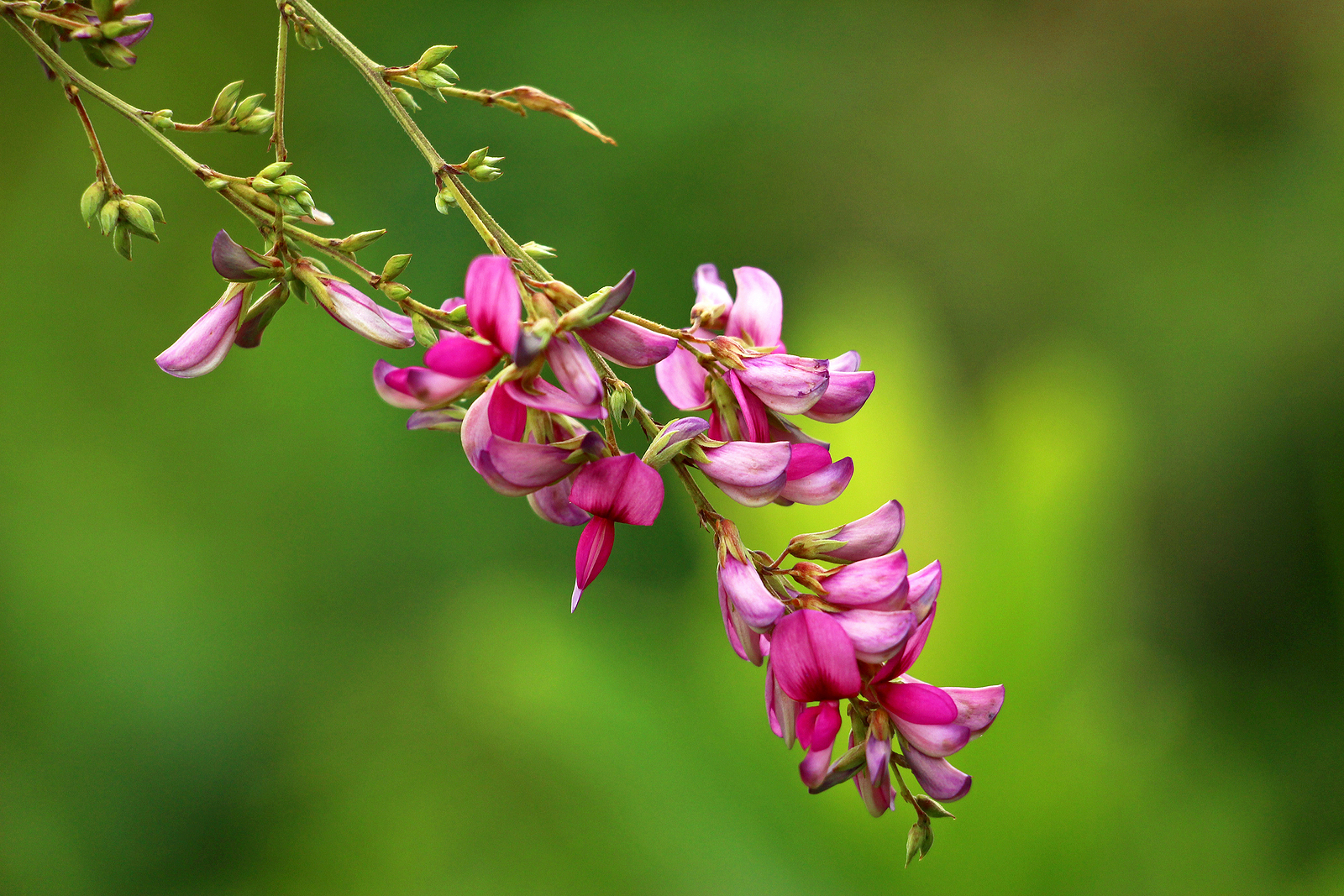 Lespedeza thunbergii (bush clover). Lespedeza–commonly called bush clover–is a woody-based perennial with arching branches of blue-green leaves that bear drooping 6-inch clusters of rose pink, sweet pea-shaped flowers in late summer. Lespedeza can endure hot, dry sites and soil of low fertility. It can grow to 6 feet (1.8m) tall. Lespedeza grows rapidly; flowers appear on new growth. Lespedeza is an excellent late-flowering plant for a mixed shrub border. Best in Zones 4-8.
Lespedeza thunbergii (bush clover). Lespedeza–commonly called bush clover–is a woody-based perennial with arching branches of blue-green leaves that bear drooping 6-inch clusters of rose pink, sweet pea-shaped flowers in late summer. Lespedeza can endure hot, dry sites and soil of low fertility. It can grow to 6 feet (1.8m) tall. Lespedeza grows rapidly; flowers appear on new growth. Lespedeza is an excellent late-flowering plant for a mixed shrub border. Best in Zones 4-8.
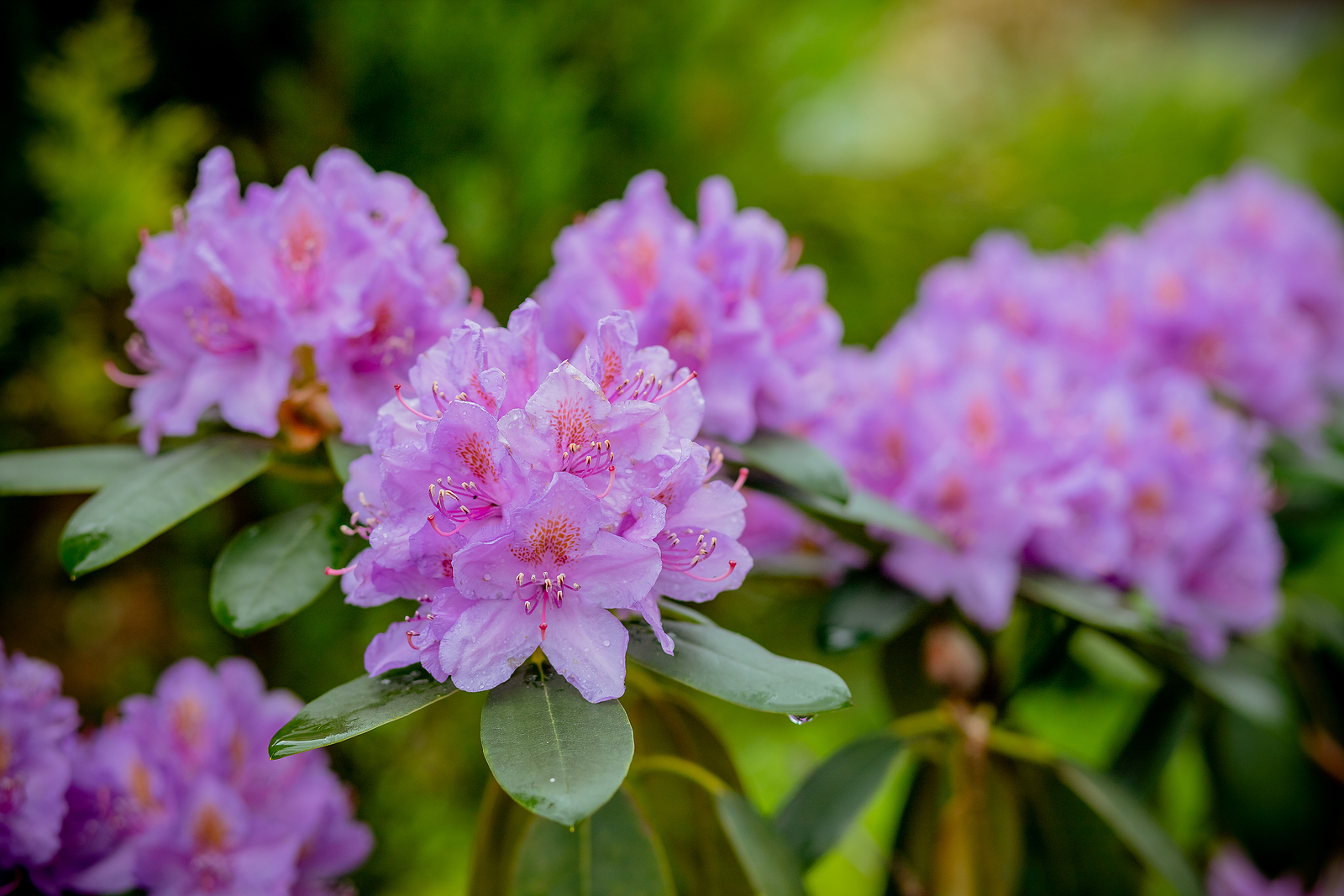 Rhododendron arborescens (sweet azalea). Rhododendrons can be planted at any time, but spring and autumn are the times of the year when plants will be least stressed. Plant rhododendrons in dappled shade. Rhododendrons will grow in full sun where temperatures stay moderate in summer. Grow Rhododendron in humus-rich, well-drained soil. Rhododendrons grow best in loose, friable soil that the roots can easily penetrate. Add plenty of gritty sand and organic matter to clay soil before planting rhododendrons. Rhododendrons prefer acidic soil. Rhododendrons cannot tolerate hot, dry, or windy conditions. As a general guideline, the larger the leaf the more shade and shelter from the wind the rhododendron needs.
Rhododendron arborescens (sweet azalea). Rhododendrons can be planted at any time, but spring and autumn are the times of the year when plants will be least stressed. Plant rhododendrons in dappled shade. Rhododendrons will grow in full sun where temperatures stay moderate in summer. Grow Rhododendron in humus-rich, well-drained soil. Rhododendrons grow best in loose, friable soil that the roots can easily penetrate. Add plenty of gritty sand and organic matter to clay soil before planting rhododendrons. Rhododendrons prefer acidic soil. Rhododendrons cannot tolerate hot, dry, or windy conditions. As a general guideline, the larger the leaf the more shade and shelter from the wind the rhododendron needs.
Also of interest:
Designing With Flowering Shrubs















